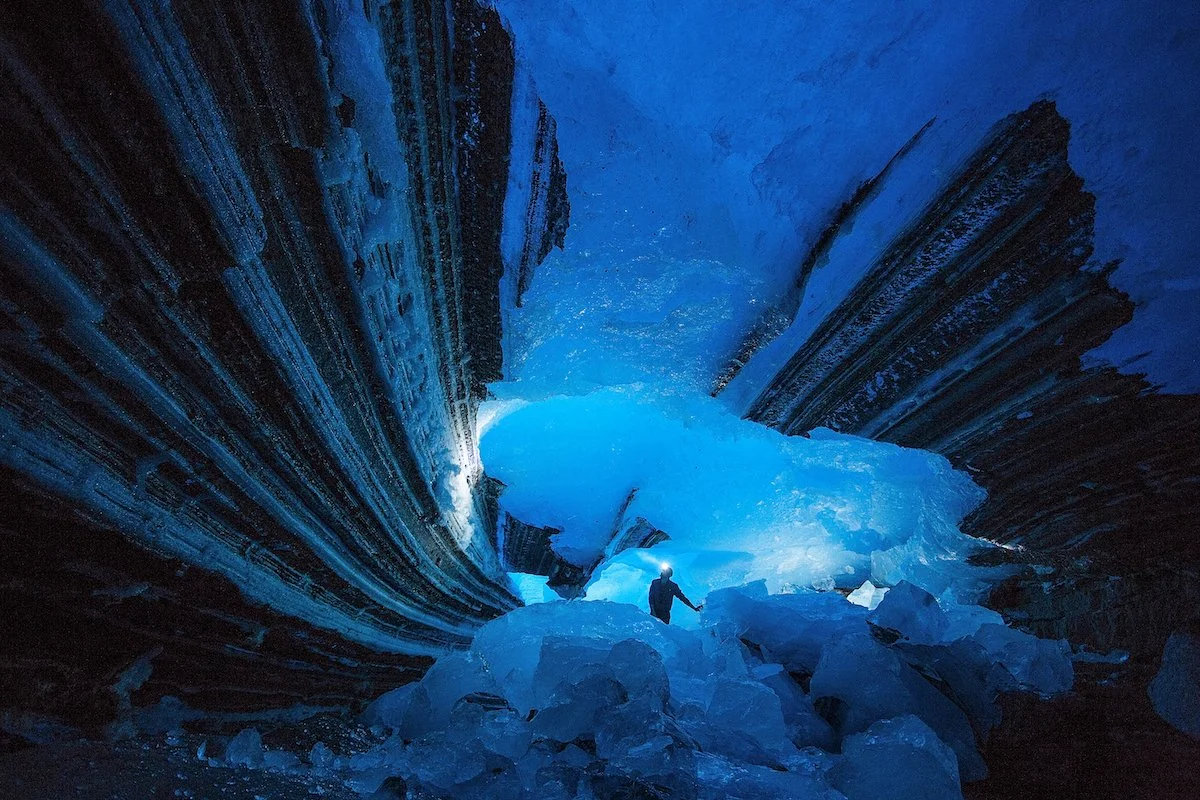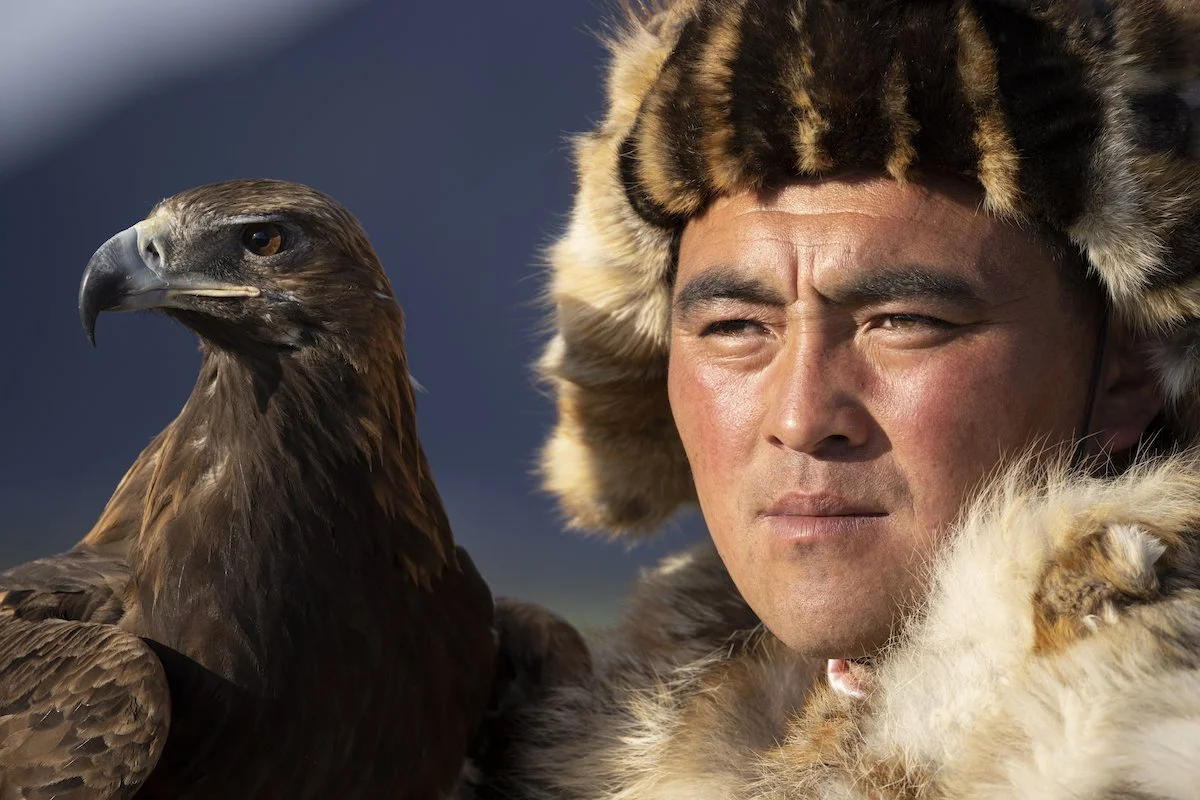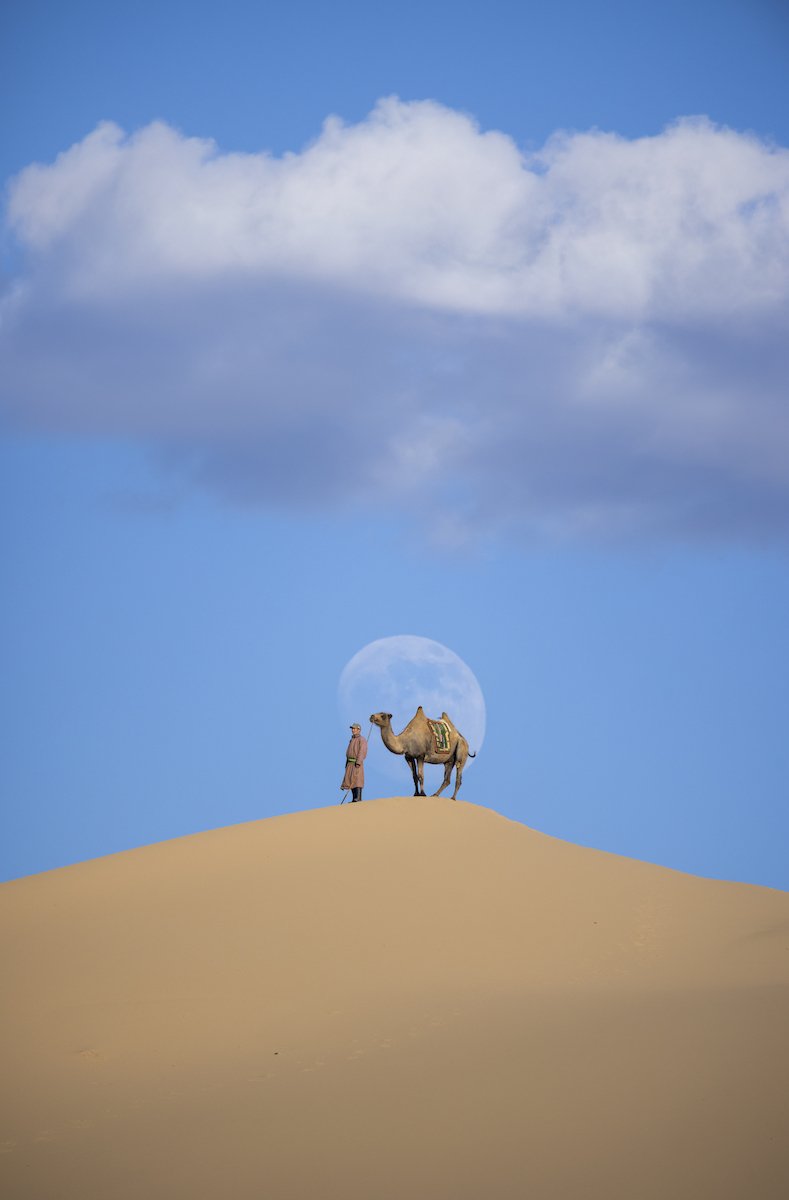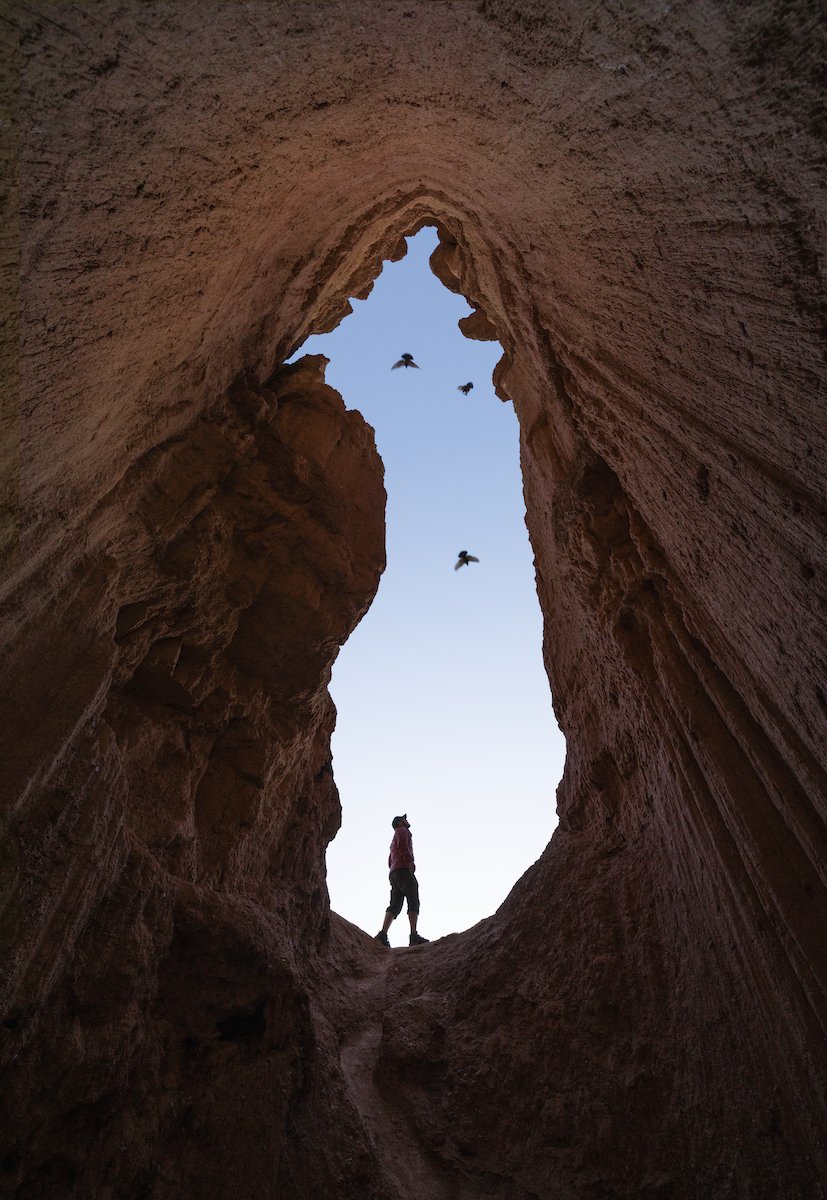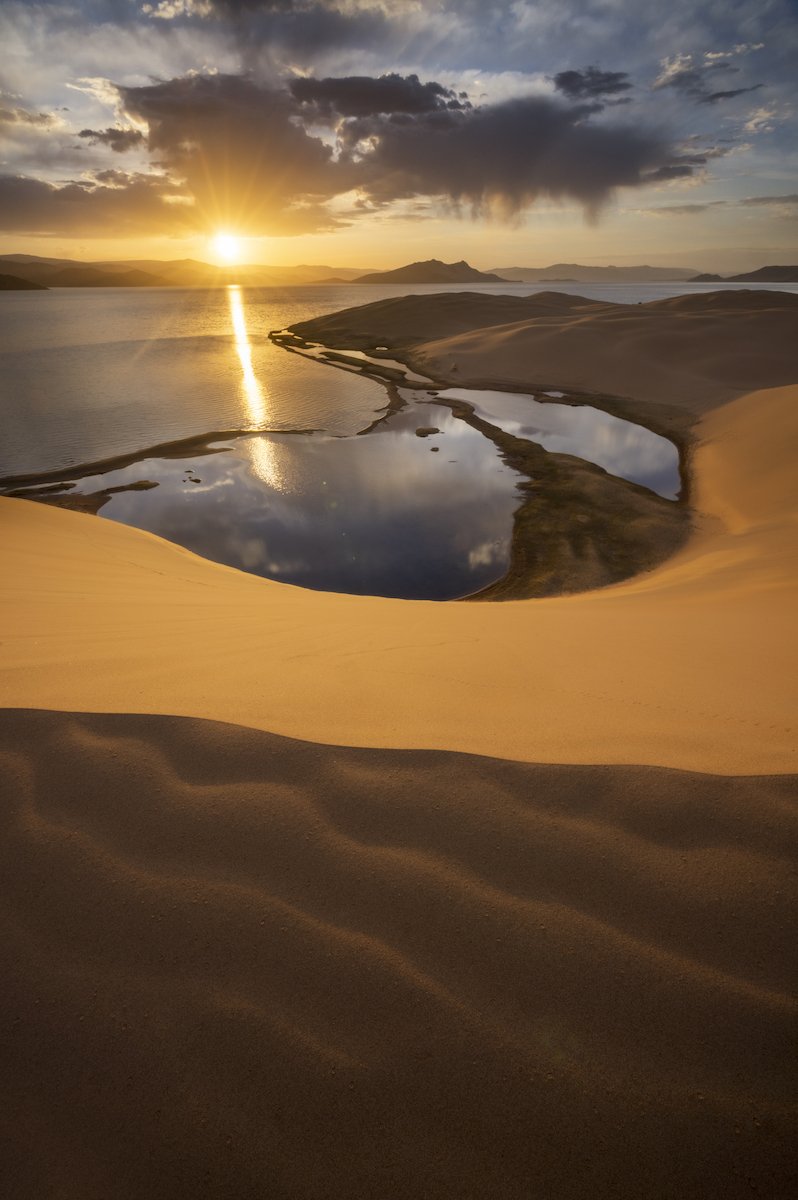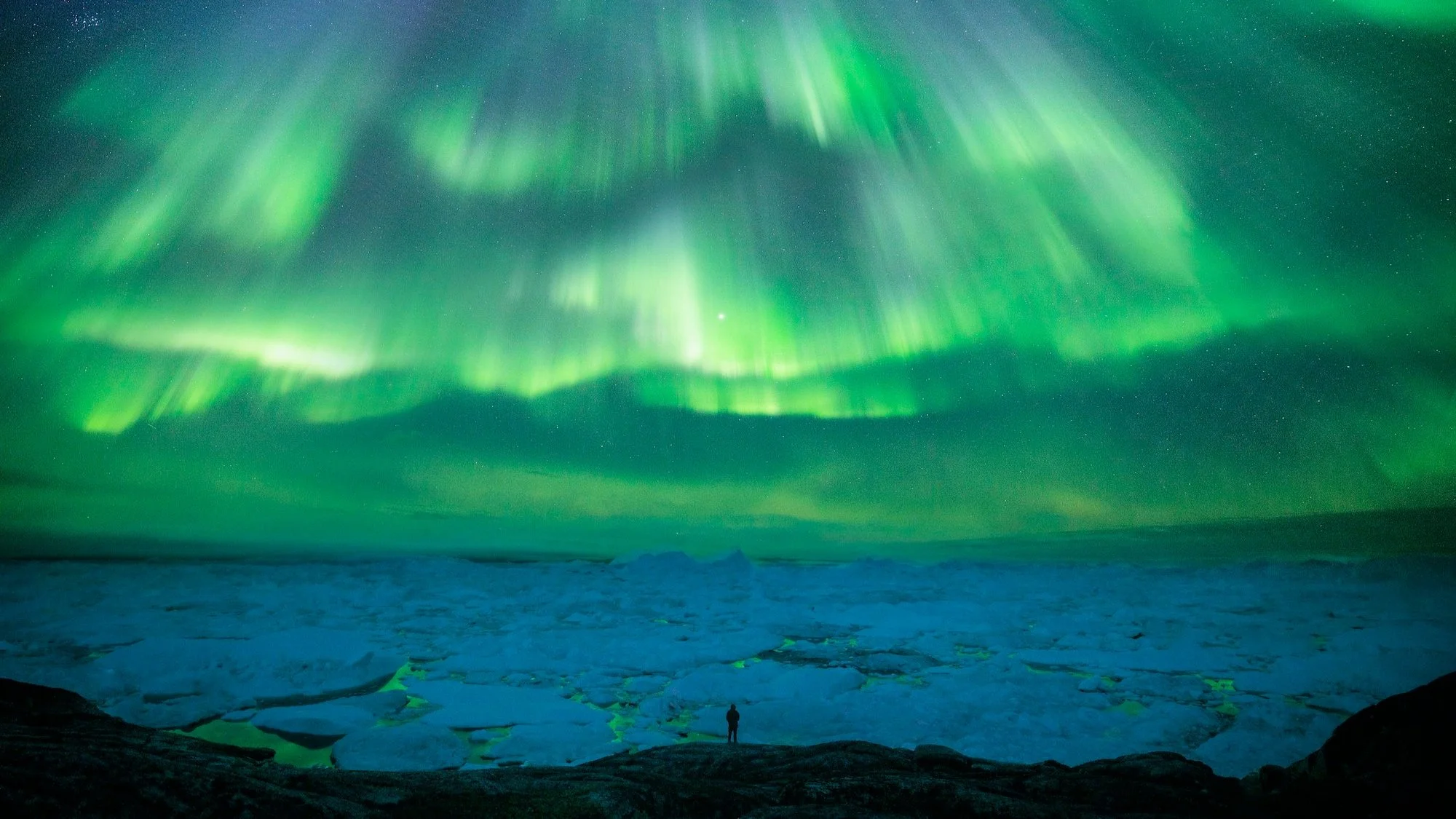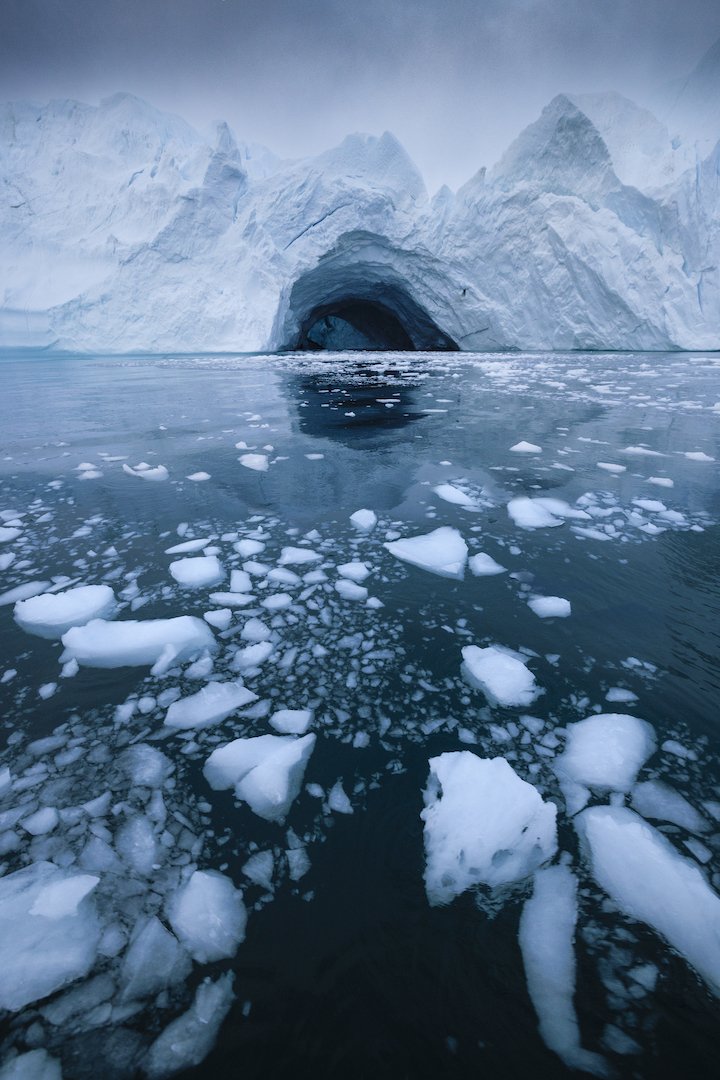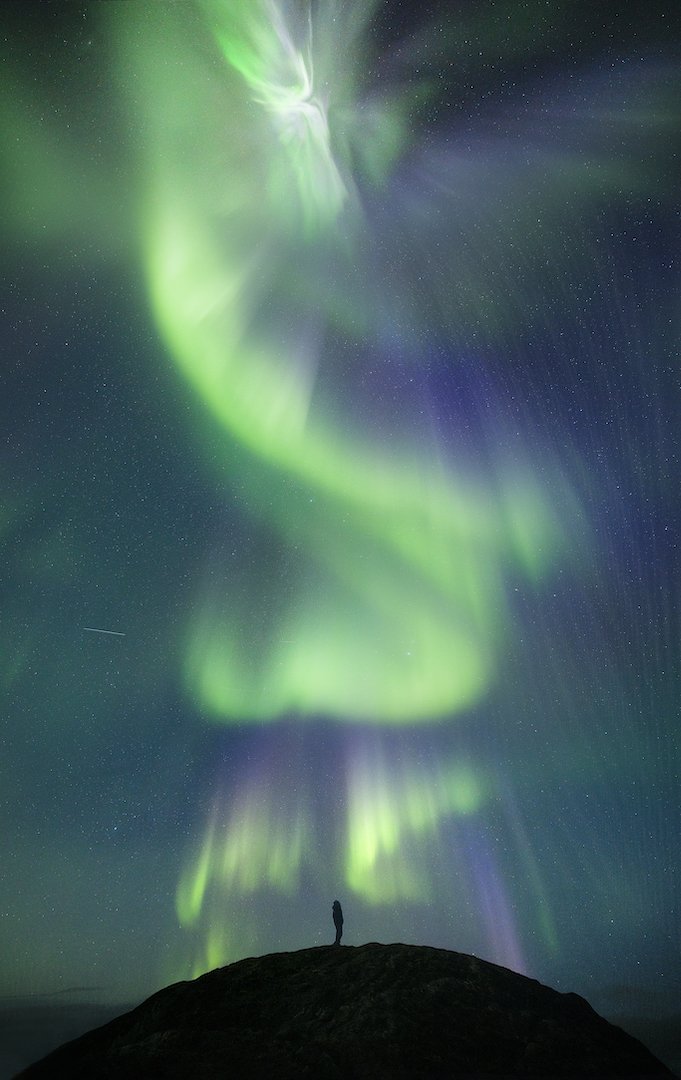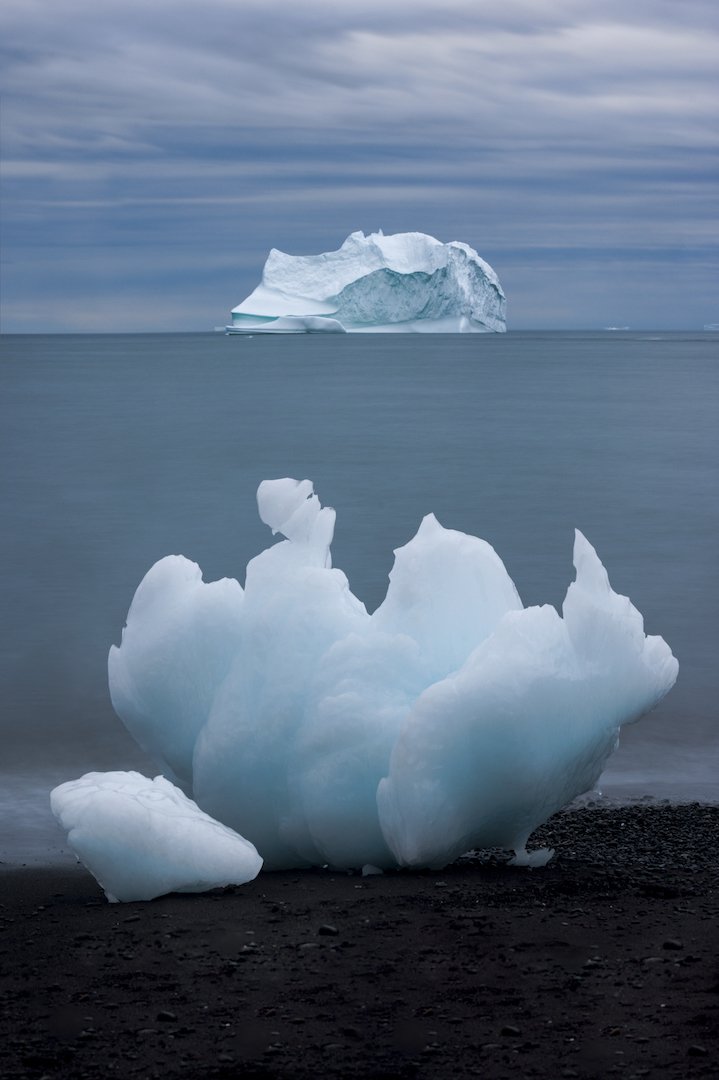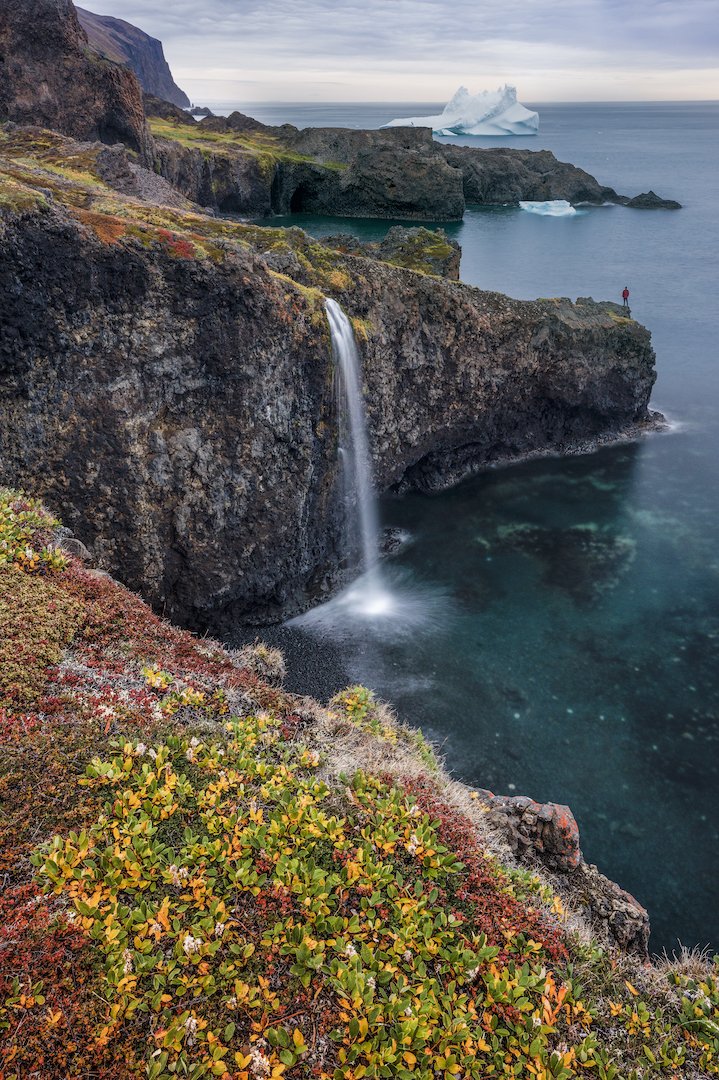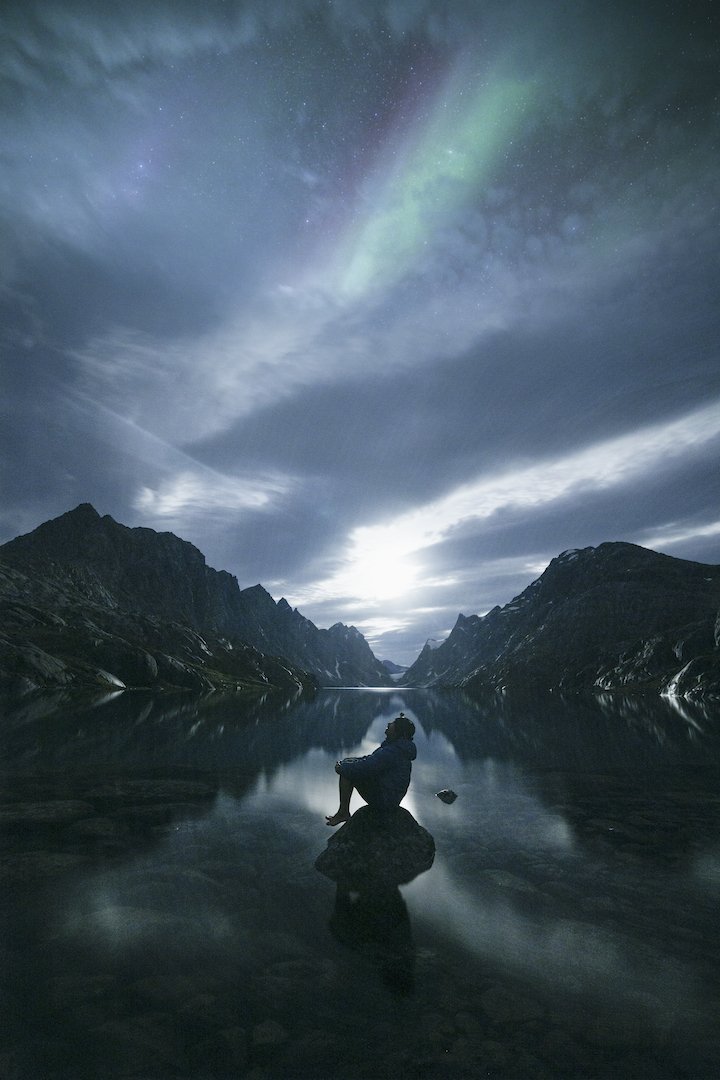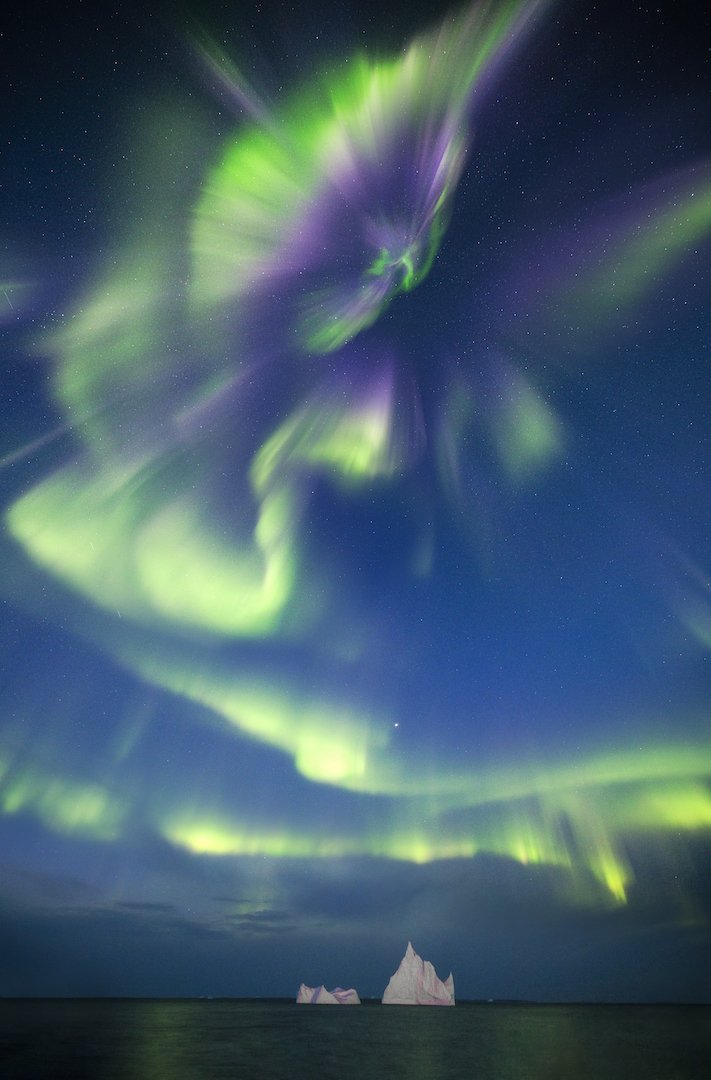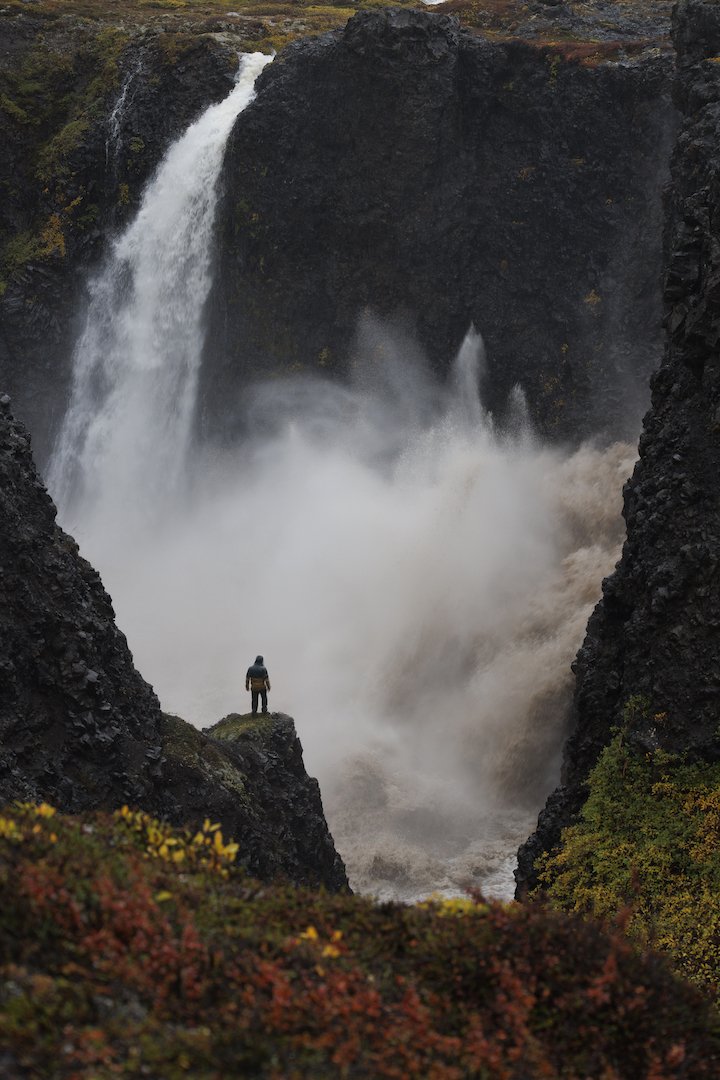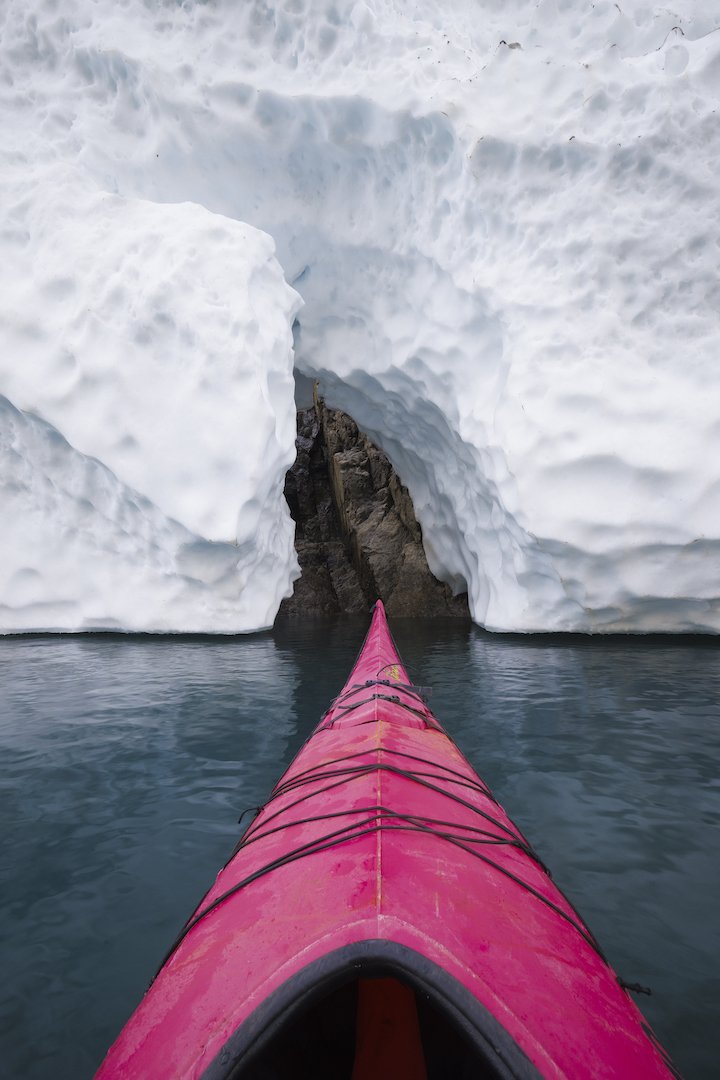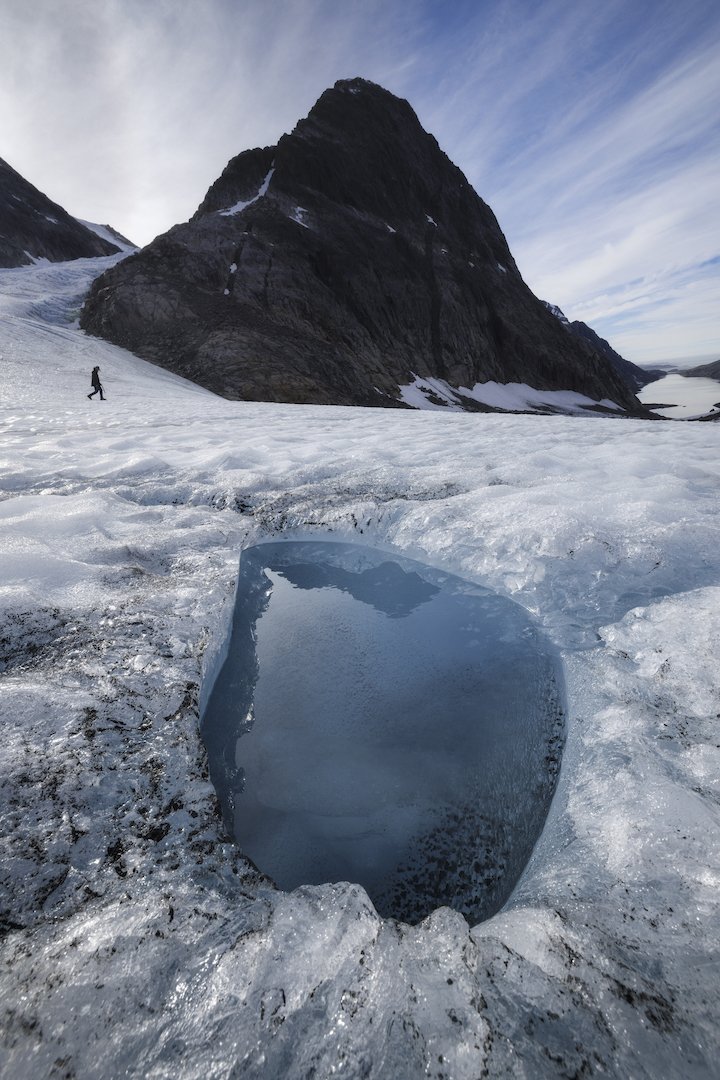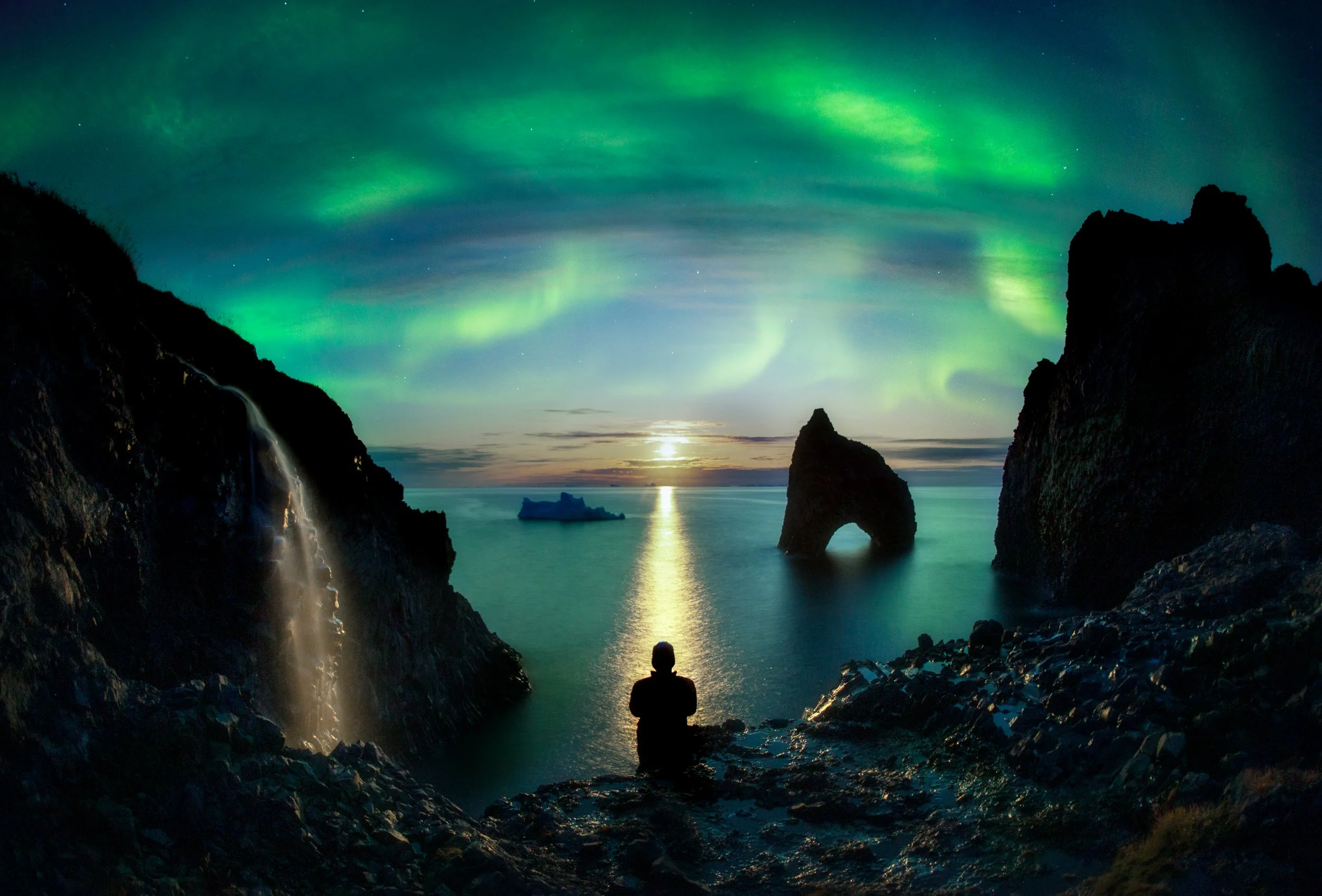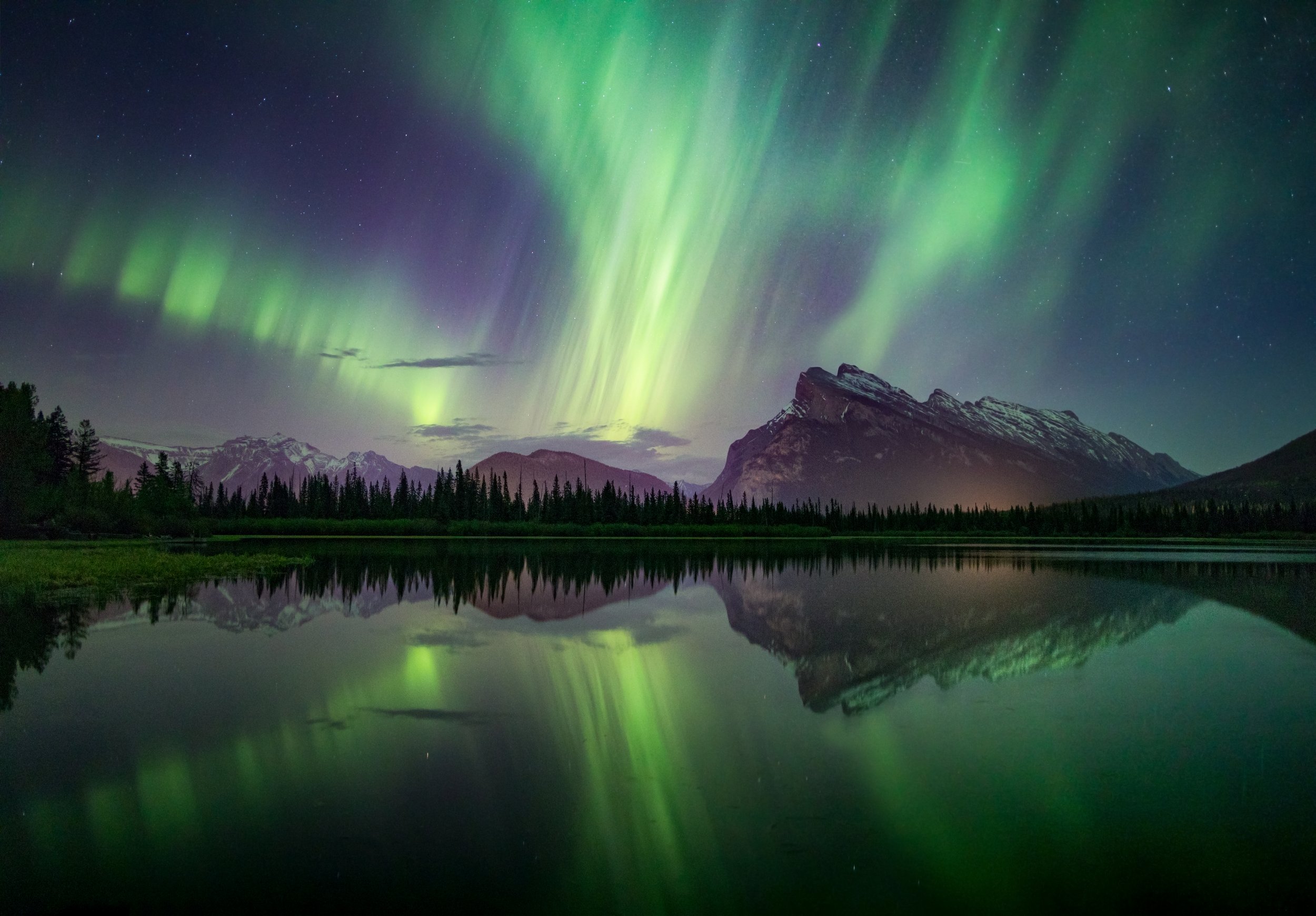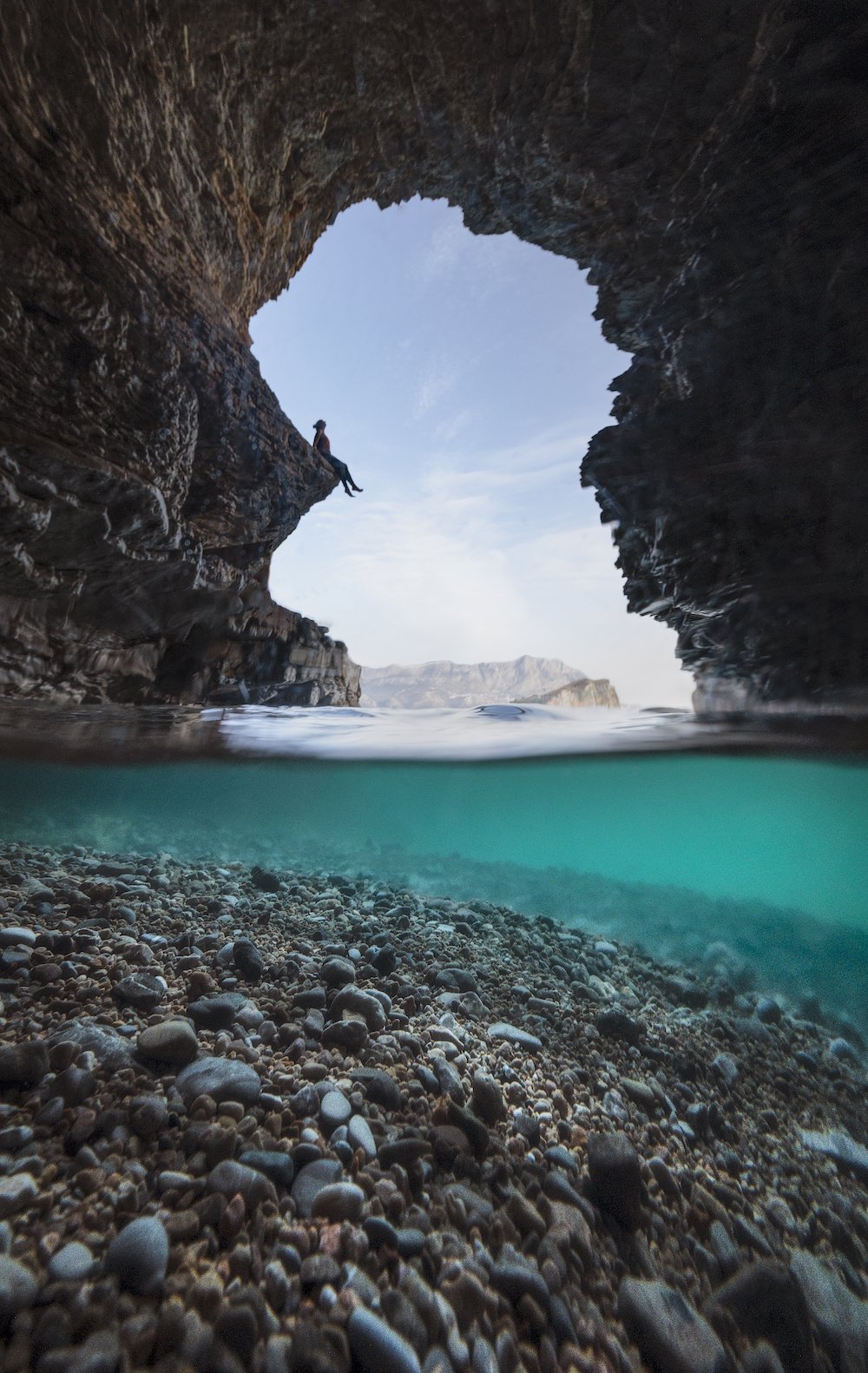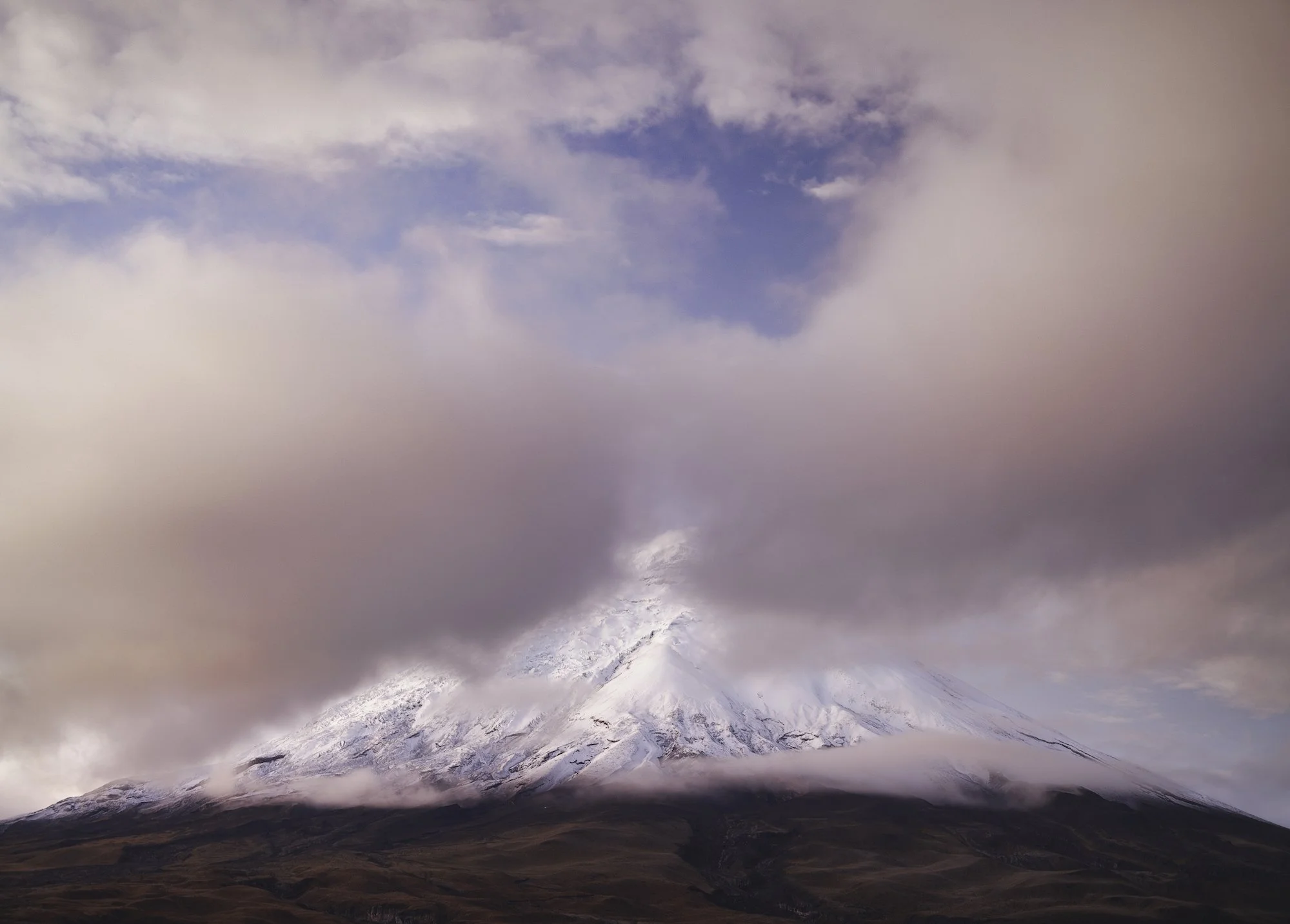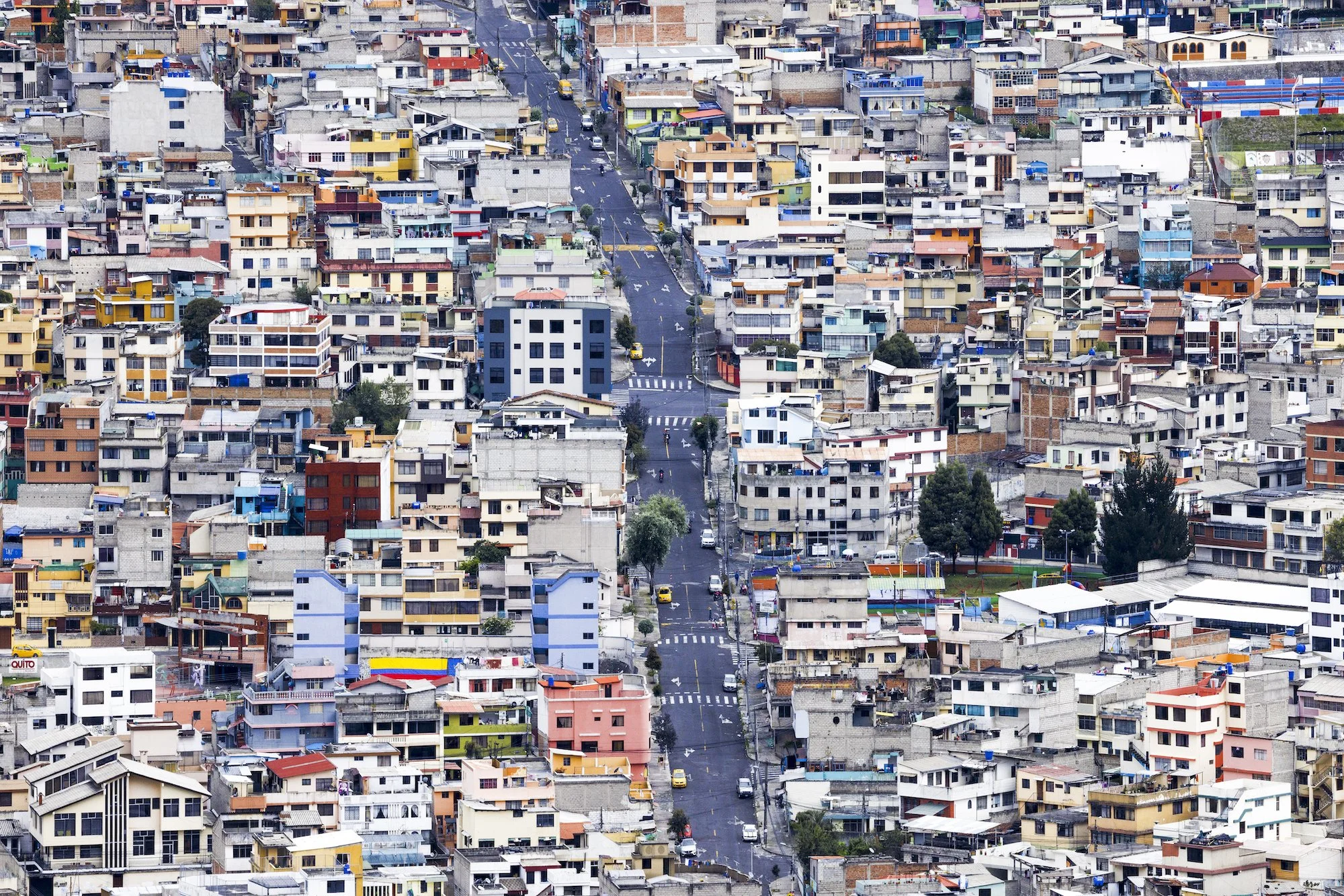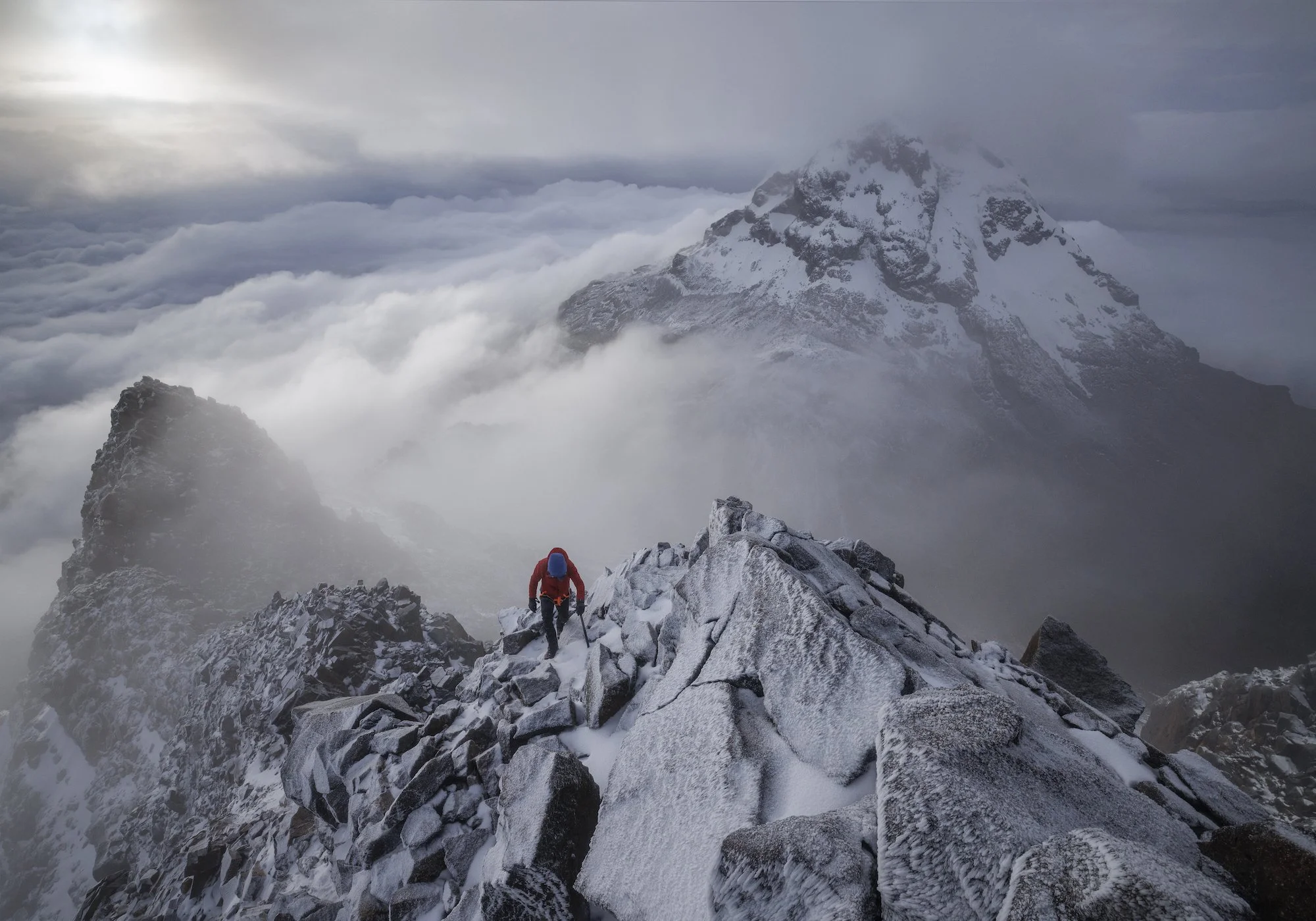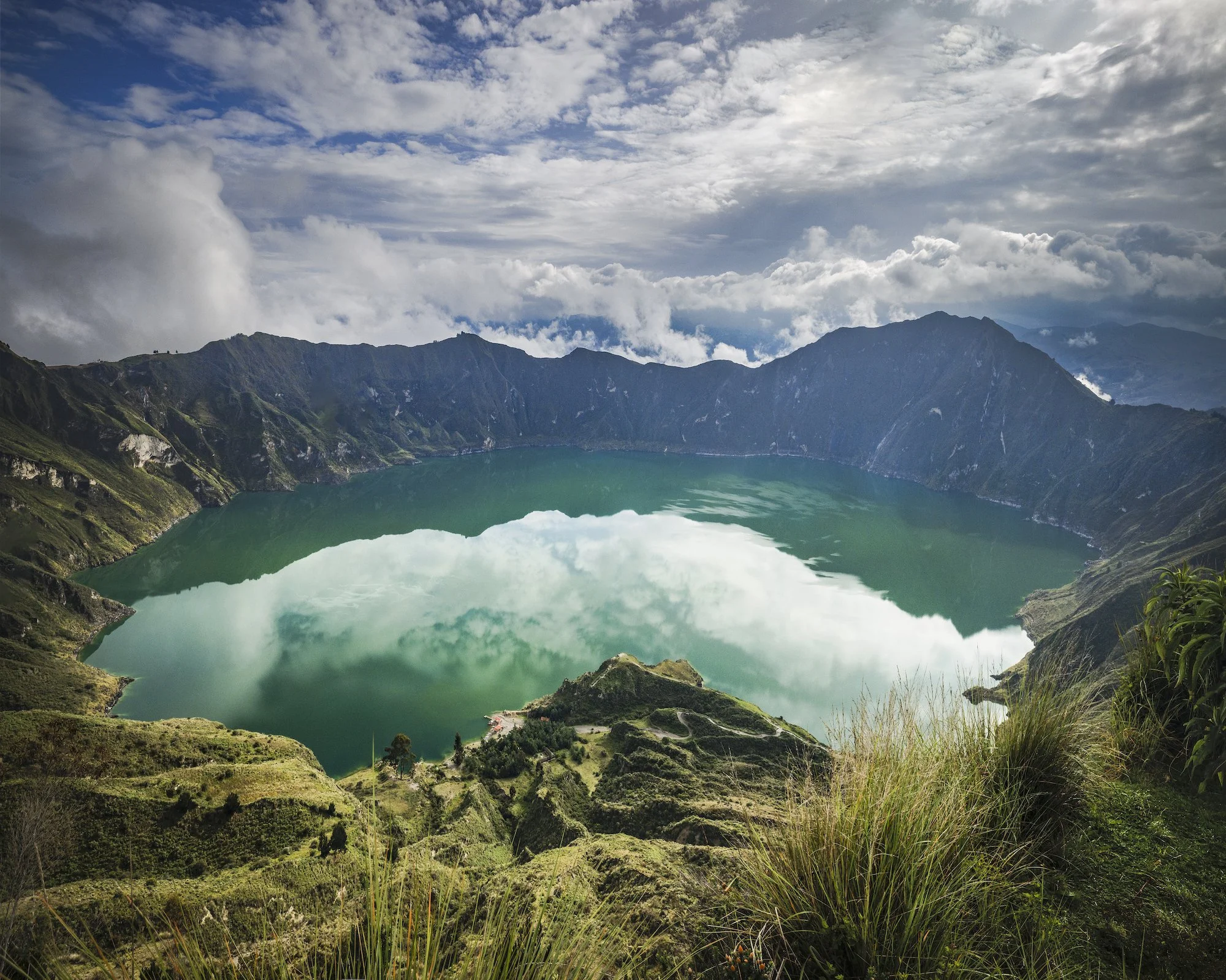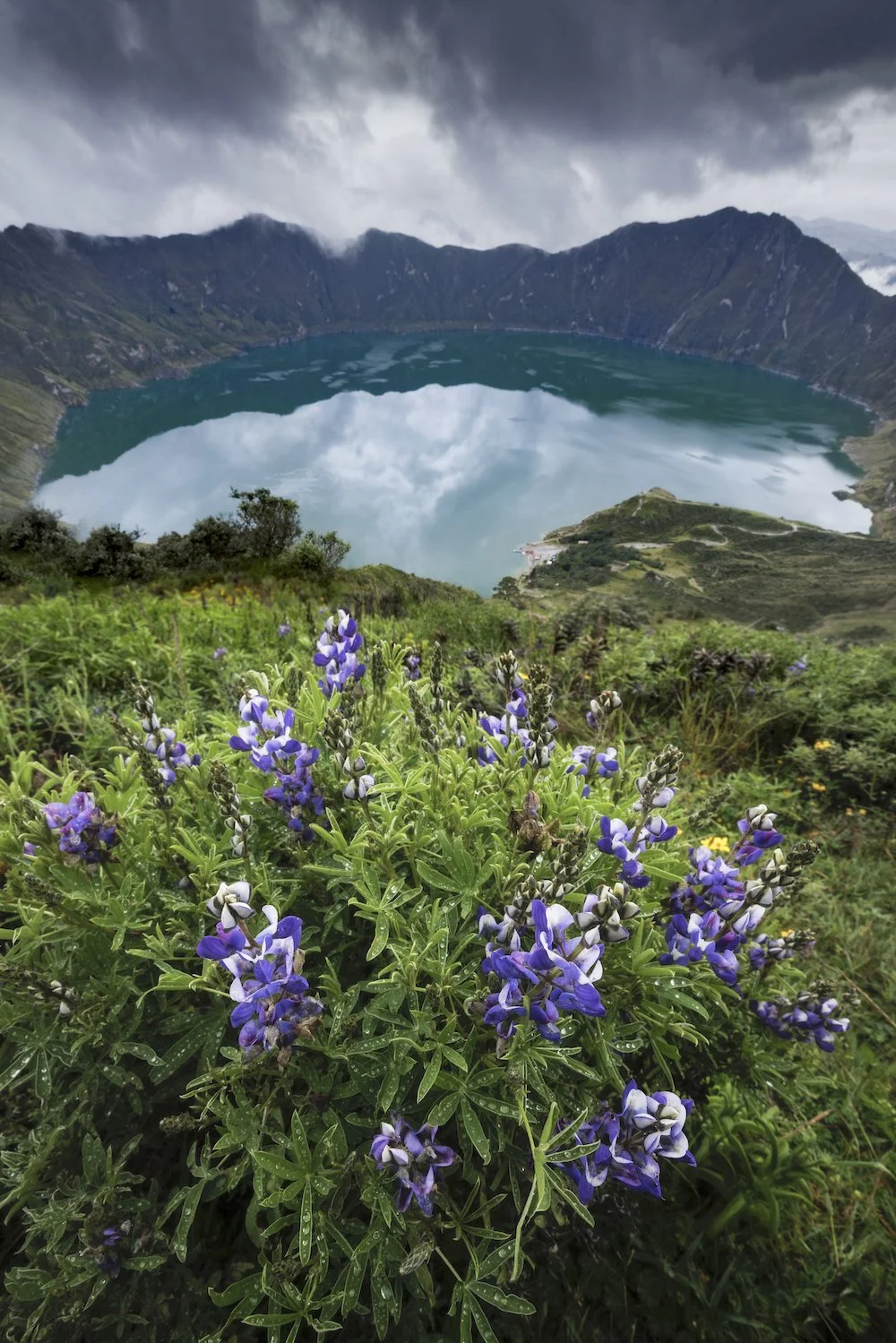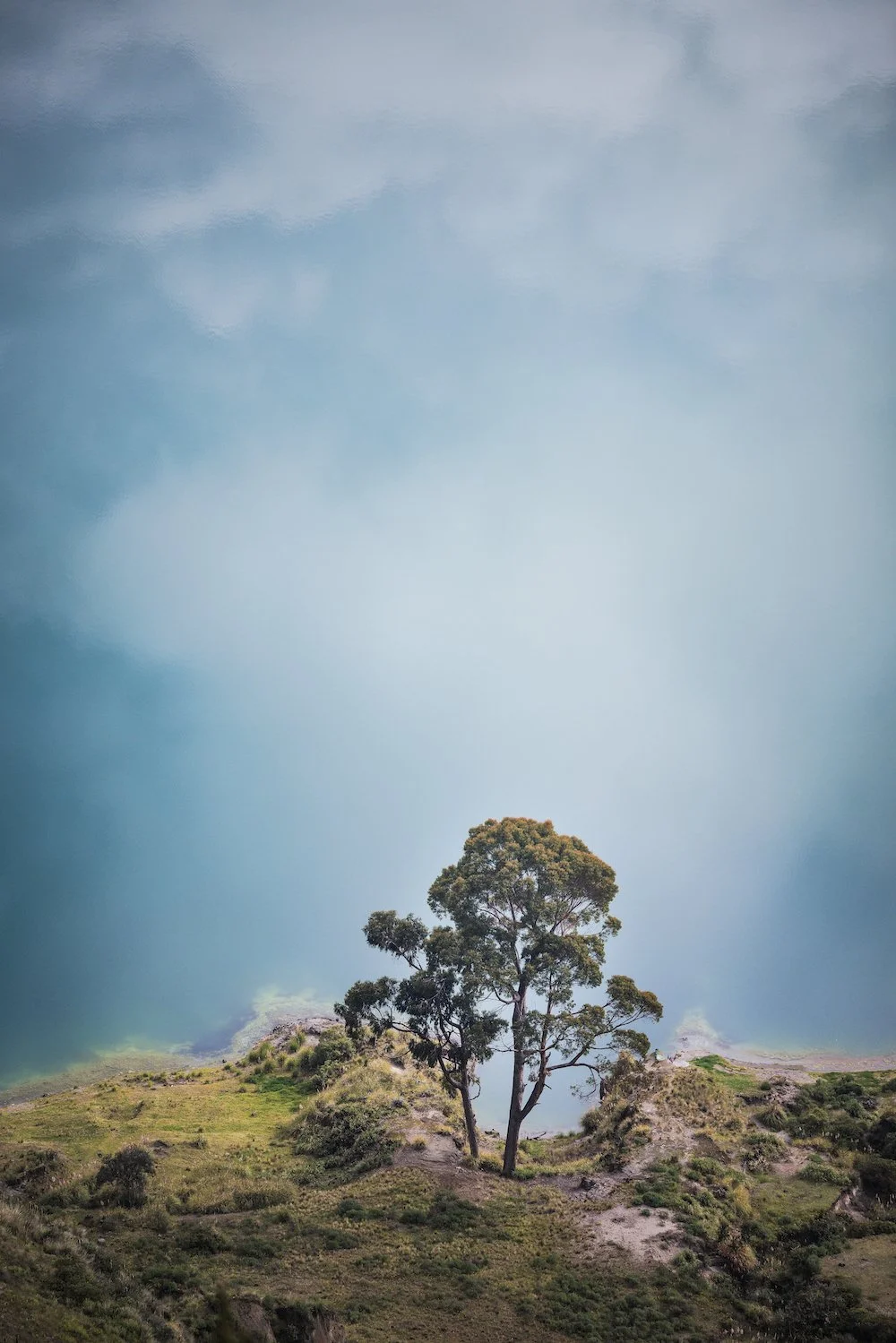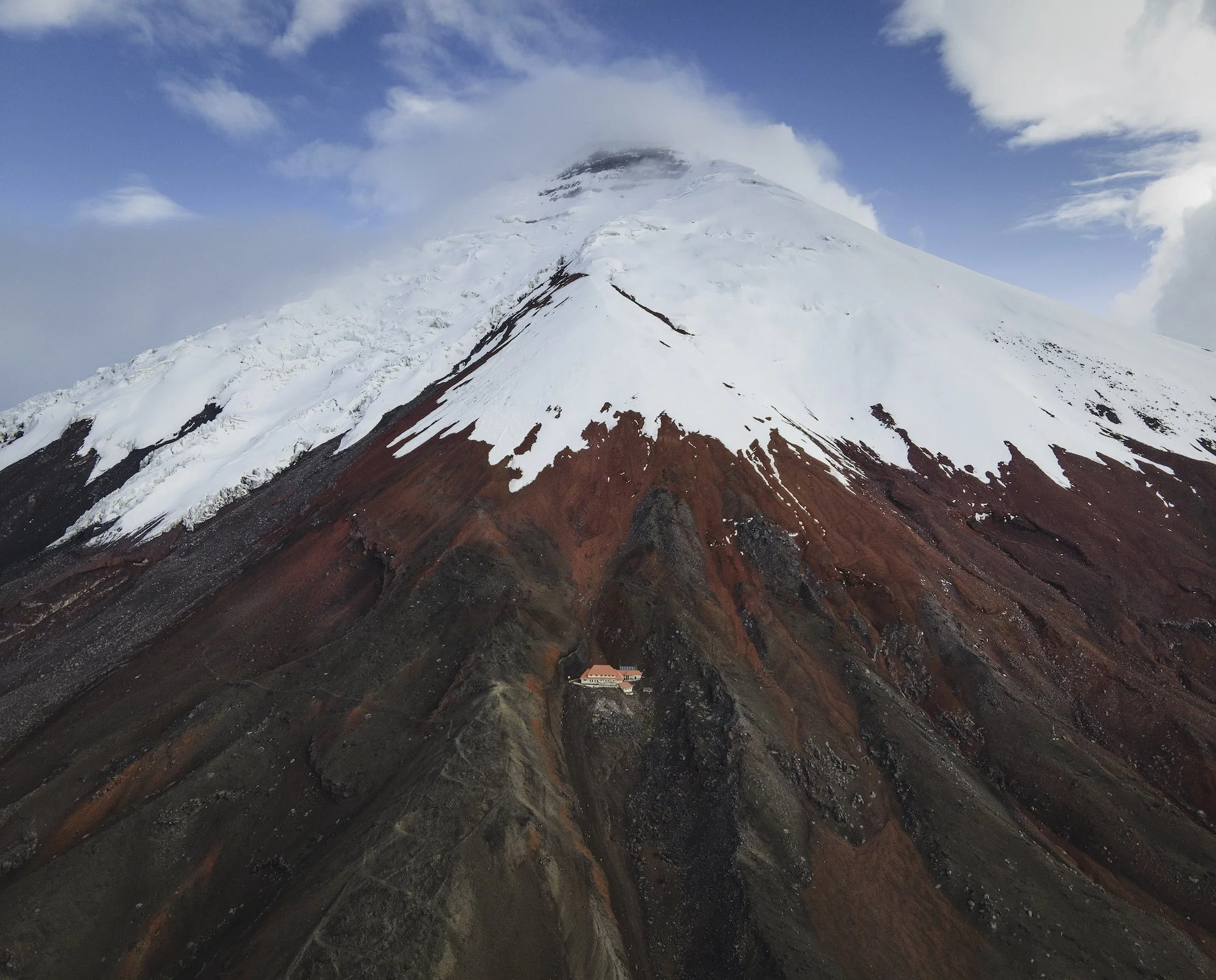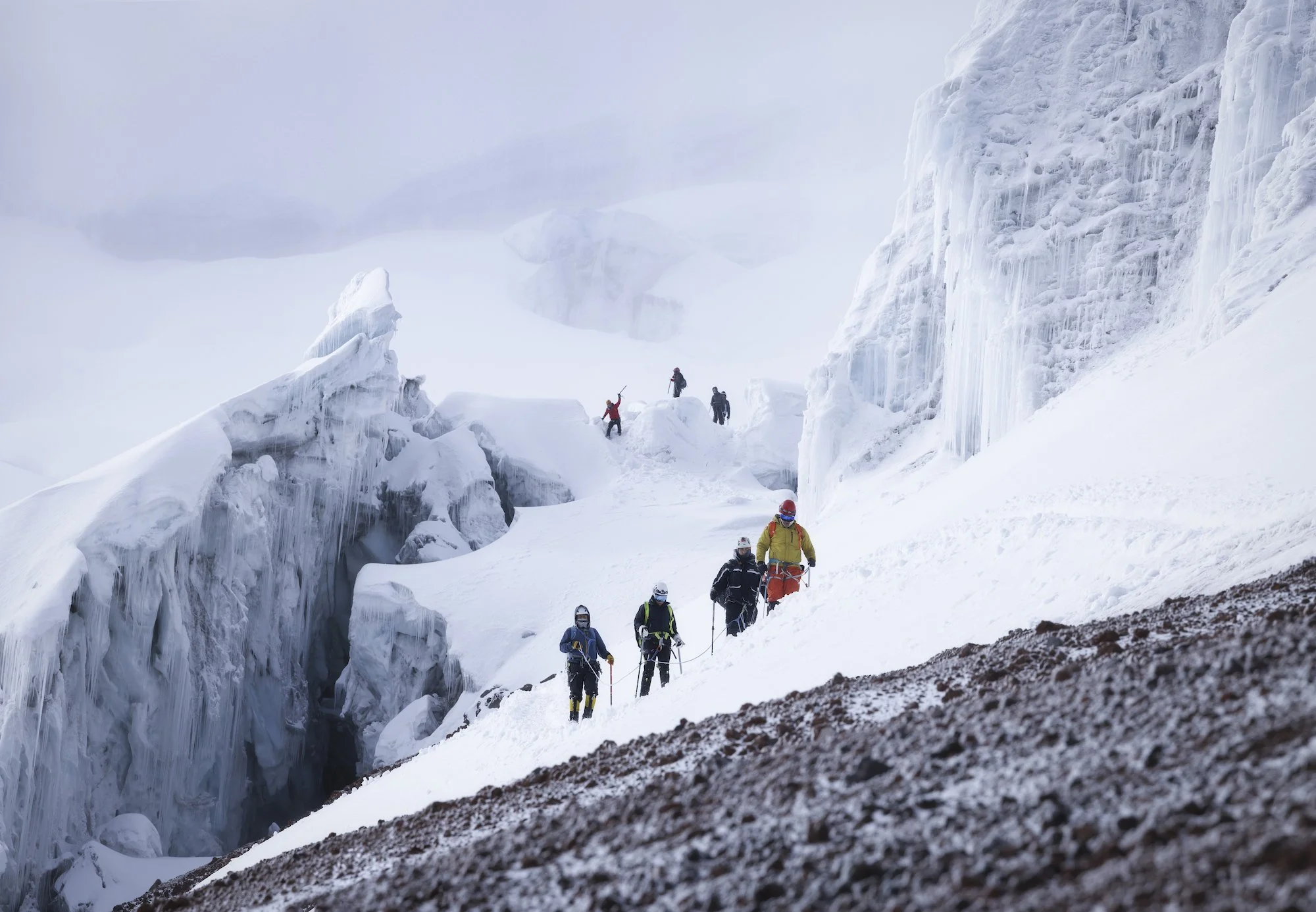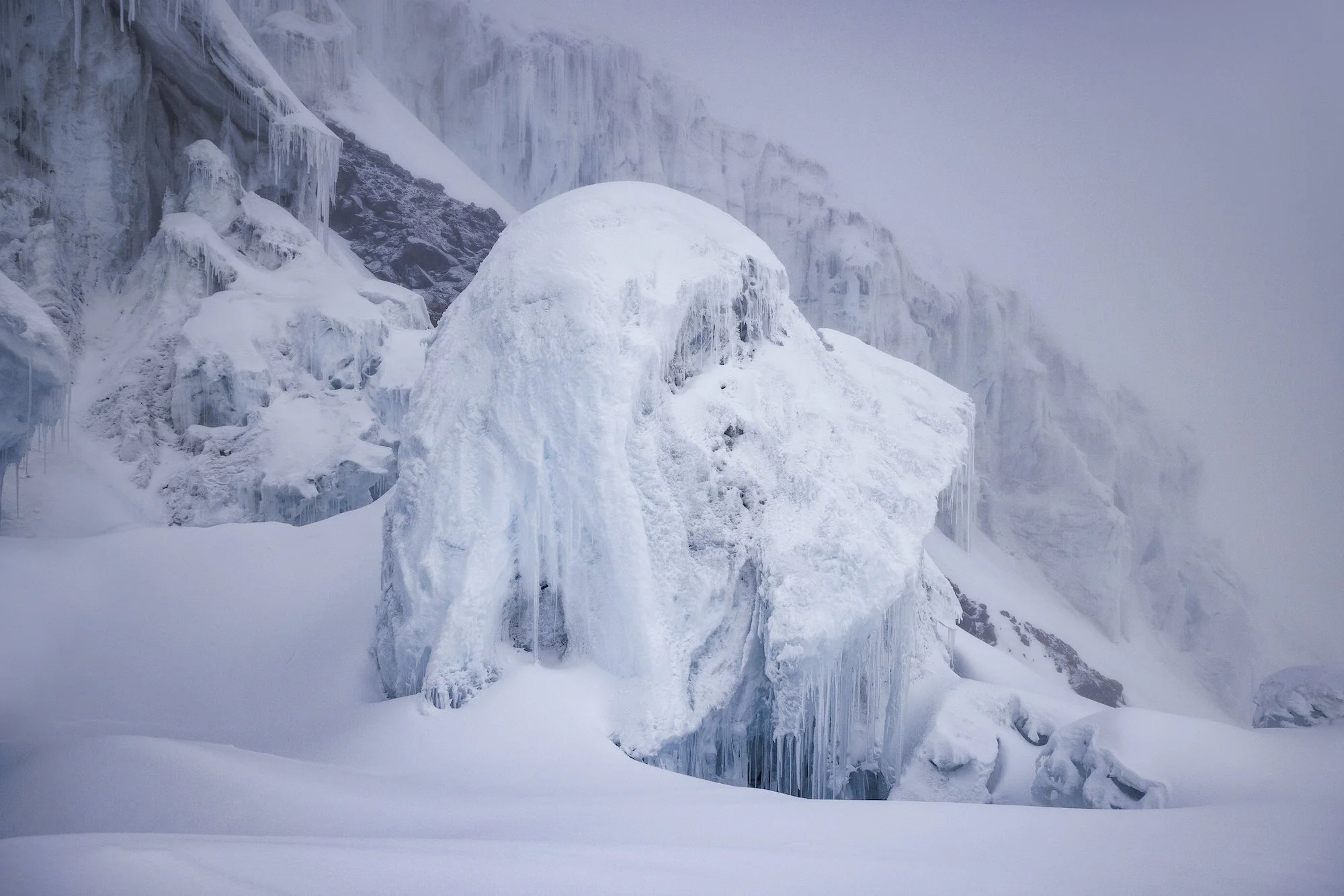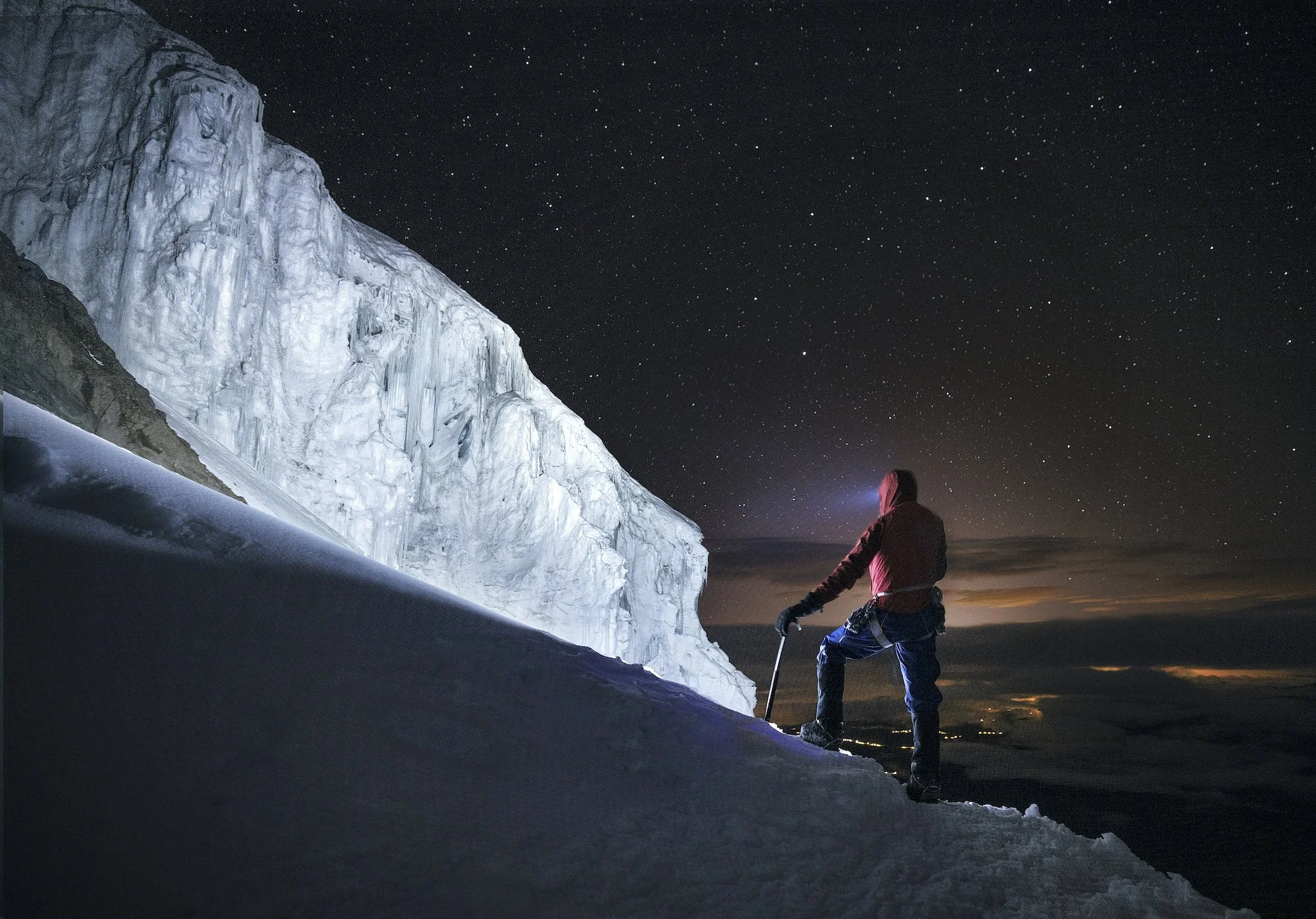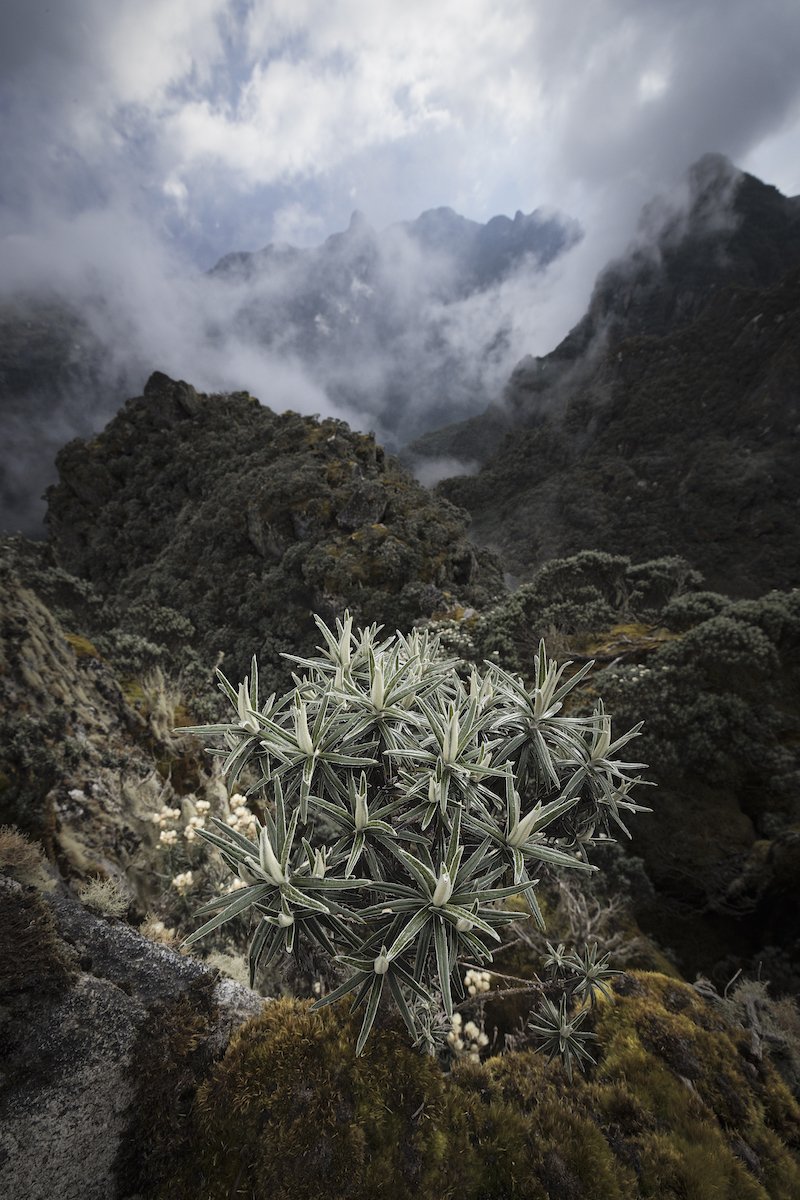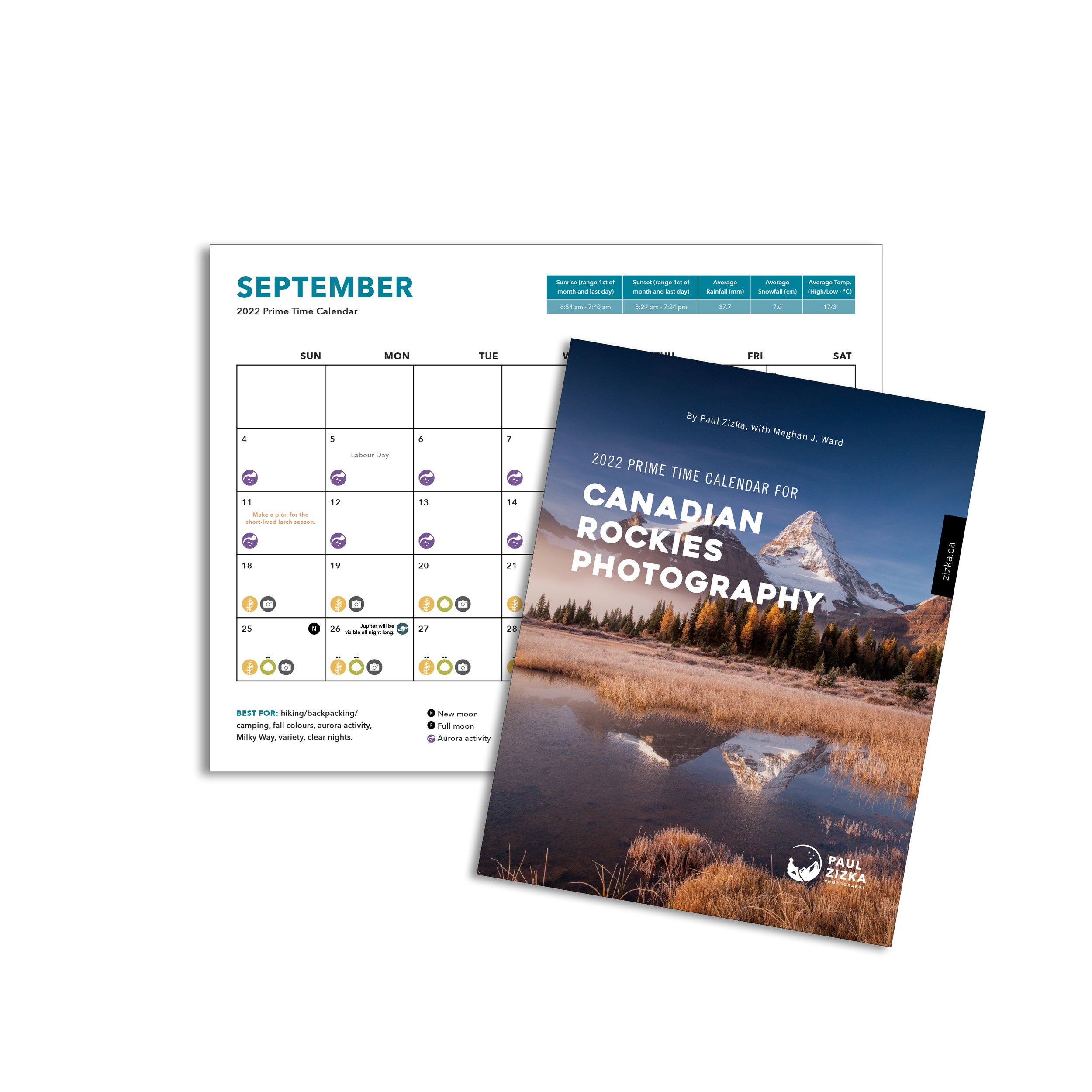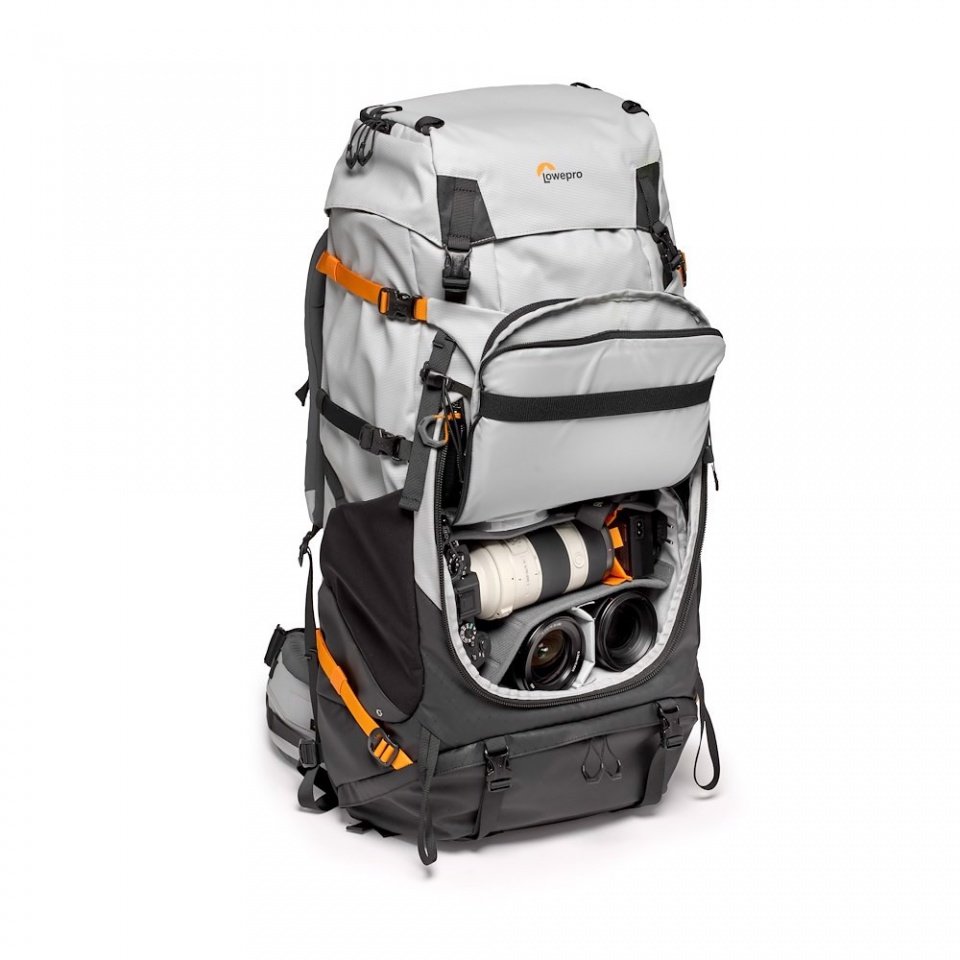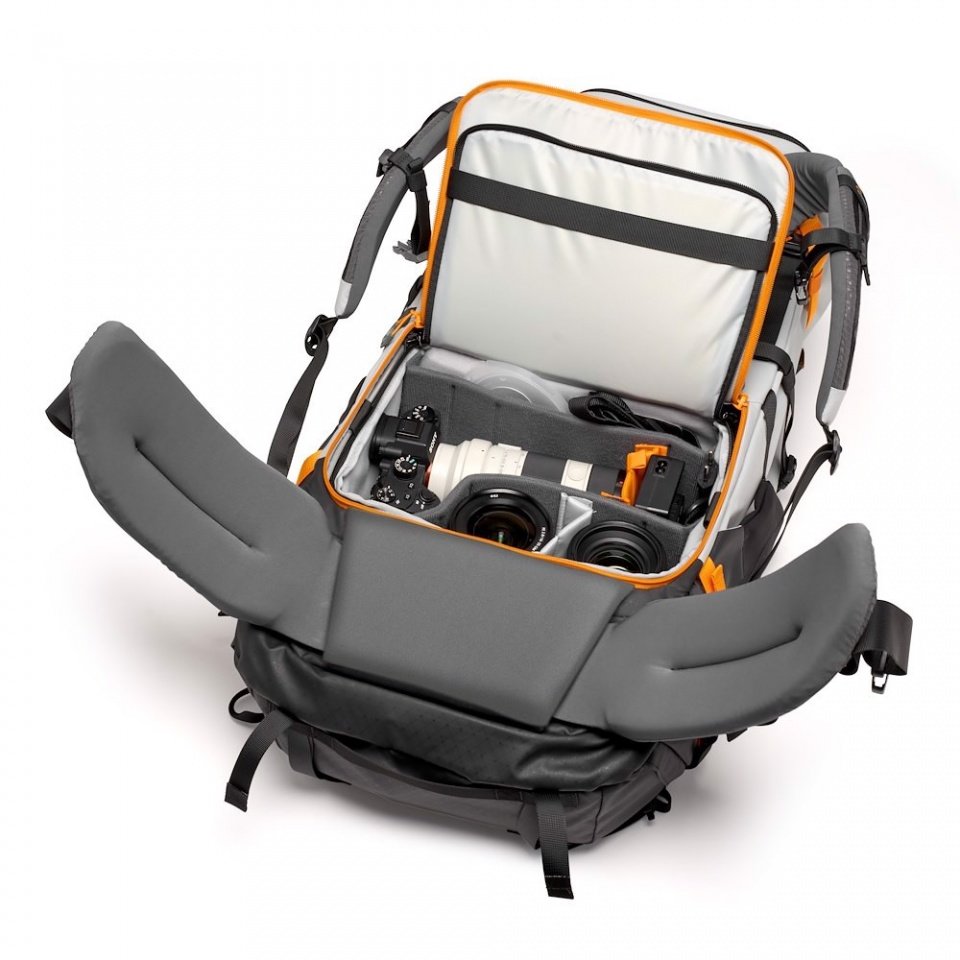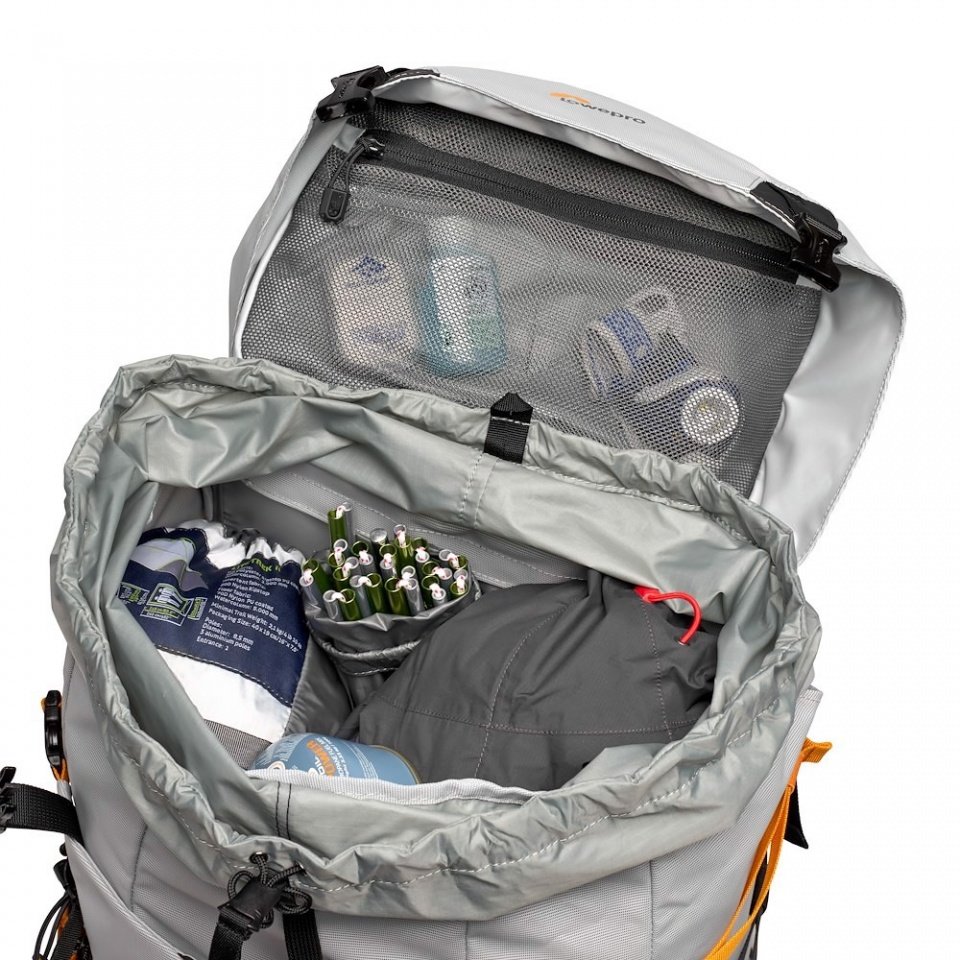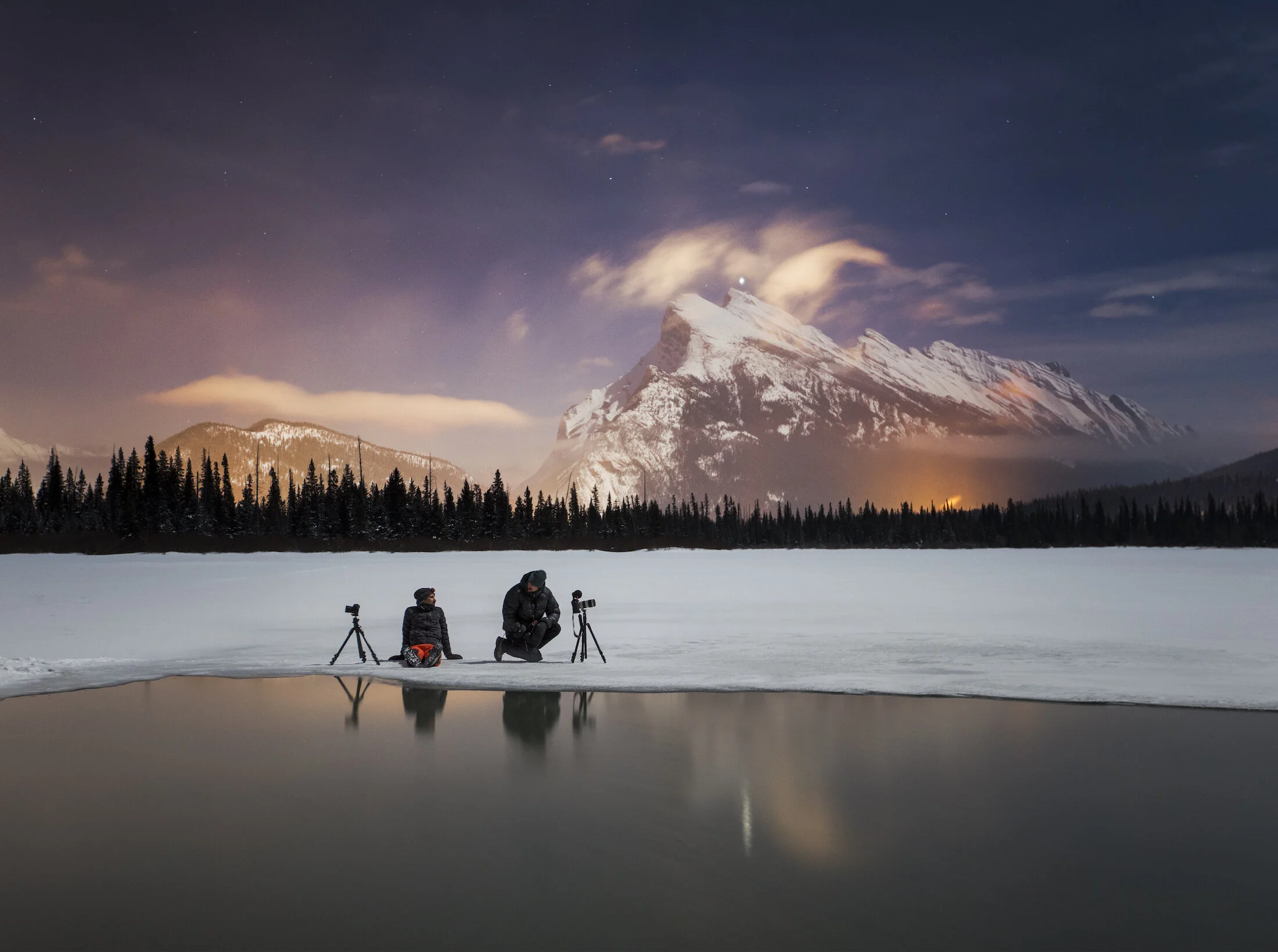
Documenting Vanishing Ice: Q+A with Paul Zizka
I’ve been photographing ice since the very early stages of my career. Whether glaciers, ice caves, frozen lakes, or mountaintops, I would continuously find myself drawn to cold landscapes in search of ice in its many forms, textures, and hues. Icescapes are among the most dynamic, visually exciting, and rewarding places a photographer can document. But as I spent more time shooting ice, it became apparent that I was capturing something that is vanishing.
I’ve been photographing ice since the very early stages of my career. Whether glaciers, ice caves, frozen lakes, or mountaintops, I would continuously find myself drawn to cold landscapes in search of ice in its many forms, textures, and hues. Icescapes are among the most dynamic, visually exciting, and rewarding places a photographer can document. But as I spent more time shooting ice, it became apparent that I was capturing something that is vanishing.
As global temperatures rise, we risk the melting of our polar regions and glaciers. Beyond the long-term human and environmental consequences of melting ice, the loss of these frozen landscapes also signifies the loss of a unique and powerful experience. I realized that my calling as an artist is to document and celebrate ice before it disappears. It’s my responsibility to bring the beauty and mystery of these foreign, enchanting worlds to as many people as possible.
This realization led to the launch of my latest project, Cryophilia.
This project has been met with support, positivity, and much curiosity, so I thought I’d take the opportunity to answer some frequently asked questions.
1. What is Cryophilia?
Cryophilia is an effort to document the rapid changes in glaciers and to celebrate the beauty of glacial ice in Canada and around the globe.
2. How/when did the Cryophilia project start and how did it get its name?
“Cryophilia” comes from ancient Greek meaning “frost loving.” Cryophiles prefer or thrive at low temperatures. I’ve always been drawn to photographing ice, cold places, and the high latitudes and have spent countless hours documenting glaciers ever since I started my journey as a photographer. Cryophilia is a personal commitment to investing a lot of my time and energy as an artist over the next several years to bring to light the changes that are happening in glacial environments and also the incredible beauty of these inhospitable locations.
3. What does the next phase of this project look like?
Over the next few years, I plan to focus a vast portion of my attention and efforts on collecting images from glacial environments, both here at home in the Canadian Rockies and abroad, and bring the photographs to the world. I believe photography has the power to stir up emotion, generate awareness and incite change when other means of communication fail. Eventually, my hope is to convey my findings in a cohesive way through the creation of a book and the presentation of an exhibit.
Ice cave explorations in the Canadian Rockies.
4. What is it about ice that intrigues and inspires you so much as an artist?
For one, there are the aesthetics: I never cease to be amazed by the multitude of shapes, forms, colours and textures a simple compound like ice can display. The possibilities appear infinite. As an artist, I find that ice renews itself and presents itself differently on every new exploration, which keeps the creative process exciting.
The other reason I am fascinated by ice, particularly glacier ice, is that it is becoming rarer, more precious — and it is becoming so at an alarming rate. The changes happening in glaciers worldwide warrant me to document them with urgency. Photography is the perfect medium to record what is occurring in these extremely dynamic environments.
5. What are some of the challenges that this project poses?
Accessing glaciers takes time, and so I expect time to be one of the key limiting factors in this project will be finding the time to visit those places repeatedly. Glaciated areas are characterised by the likelihood of inclement weather, which can make the photography process tedious at times.
6. What are you learning from this project?
I am more and more aware of how fast the ice is vanishing, and of the ramifications of that loss. Beyond the long-term human and environmental consequences of melting ice, for me the loss of these frozen landscapes also signifies the loss of a unique, powerful experience. The stillness and silence of cold places are humbling and wonderfully eerie; they are among some of the most magical on Earth.
7. What do you hope other people learn or consider when they encounter your project?
I sincerely hope that people develop an appreciation for how special, stunning and unique these environments are, and also how fast they are vanishing, on a timescale that we can relate to.
“Icicle Hollow” - Banff National Park, 2022.
8. Tell us the story behind one of the limited edition images in your growing Cryophilia collection.
The above photograph is an example of the fleeting, fascinating features I regularly come across on my visits to the local glaciers. I spotted a small opening in a cornice while wandering along the edge of the Columbia Icefield, and allowed my curiosity to get the best of me. Upon closer inspection, the hole opened onto a small, but stunning crystalline chamber within the glacier. At the end of the room, icicles dangled from the ceiling, shining brightly against the blue walls beyond. Those are beautiful, intricate features that only exist for a few days at most, and they are findings I enjoy sharing with the world, in the hope that they elicit a response to care for these places.
9. How can people support this project and your mission?
I encourage people to look at the images and let themselves be amazed by the diversity, dynamism, and beauty of those underdocumented environments. Let me know how the images make you feel. And develop an appreciation for glacial environments.
Keep following the project:
Official Cryophilia page: https://www.zizka.ca/cryophilia
Project News: https://mailchi.mp/zizka/cryophilia
Land of the Eternal Blue Sky: 5 Favourite Images From Mongolia
It seems impossible to take a bad photo in Mongolia. With towering sand dunes that glow during magic hour, vast landscapes that seem to stretch on for eternity, and welcoming people who share their traditional way of life and—a photographer will find endless possibilities. It’s no wonder that OFFBEAT returned to the “Land of the Eternal Blue Sky” this June to host two photography workshops: The Gobi Desert and The Wild West.
It seems impossible to take a bad photo in Mongolia. With towering sand dunes that glow during magic hour, vast landscapes that seem to stretch on for eternity, and welcoming people who share their traditional way of life and—a photographer will find endless possibilities. It’s no wonder that OFFBEAT returned to the “Land of the Eternal Blue Sky” this June to host two photography workshops: The Gobi Desert and The Wild West.
After a long commute from Canada (in my case) to Mongolia, we were gifted with smooth logistics, perfect weather, and incredible light. Although I spent most of my time focused on leading these workshops, I managed to come home with thousands of photos. I’ve sifted through them all and am excited to share my 5 favourite images along with the story behind each one.
View the collection of Mongolia images available as Limited Edition Prints!
1. “Khongoryn Els”
A tight frame of sand dunes where every single pixel is 100% sand. I have been to this location before and fell in love with shooting more intimate scenes within the scene. Upon arrival in the Gobi Desert, I started to seek out these compositions. I shot a number of those images that day and this is my favourite one.
2. “The Camel Herder and the Supermoon”
Our time in the Gobi Desert coincided with the June super moon, also known as the Strawberry Moon. We arranged for camel handlers and their camels to join us for sunset and nighttime photo shoots. We came up with the concept of positioning one of the camel herders on a distant dune in order to make the most of the rising super moon. We were fortunate to have soft light and some low-hanging clouds that didn’t obscure the moon as it rose. It was definitely a magical moment to see all those elements align in front of our eyes.
3. “The White Stupa”
This image is the result of childlike curiosity. The image was taken in an intriguing feature that I spotted from far away alongside trip co-leader Curtis Jones. When we investigated closely, the feature turned out to be a massive keyhole that we could drop into and shoot out of. I shot a few frames right away to take advantage of the alpenglow and by a stroke of luck, a few birds flew through the frame. To me, this image represents the importance of being curious in photography and, and following your nose and sticking your head and things.
4. “Ulaagchiin Khar”
This was taken at Ulaagchiin Khar Lake in West Central Mongolia after the photography workshop came to a close. This was a place that took a lot of working and driving to get to. We didn’t have much time at this location so I made the most of it by shooting in the early morning. I shot the sunrise from the top of the biggest dune in a vast dune field that juts out into the middle of the turquoise lake. I started looking for interesting foregrounds as soon as I reached the top of the dune and found amazing ripples to work with. Those ripples became the leading lines in this classic landscape shot featuring beautiful rich light and some nice geometry.
5. “Jenisbeck”
Last but not least, we have this tight portrait of eagle hunter Serik Jenisbek in the village of Sag Sai. We created this image at sunset in some phenomenal natural light. I must have shot thousands of images of Serik Jenisbek, both with his eagle and on his horse. This is one of my favourite shots of the lot because it has a candid feel and capturing the intimate connection between Jenisbek and his eagle was a very special moment.
Overall, this trip to the Gobi Desert and Western Mongolia was absolutely incredible. Mongolia is quickly becoming one of my favourite countries in the world, not just for the photography but for the people and the sense of isolation you experience when you’re there. I hope these images convey the natural beauty and variety that Mongolia has to offer.
View the collection of Mongolia images available as Limited Edition Prints!
Join OFFBEAT in Mongolia in 2024: sign up for our newsletter to stay in the loop about this trip.
Thank you to Mongolia Expeditions for being terrific hosts.
Greenland Grandeur: Ice, Water and Northern Lights
Earlier this year, I was fortunate to spend an entire month in Greenland, a place that feels like my second home. This trip, which marked my 6th visit to the island country known as Kalaallit Nunaat in Greenlandic and Grønland in Danish, involved leading two OFFBEAT photography workshops in familiar locations and working on a tourism photography project at a destination that was new to me. Despite revisiting several places, natural wonders such as ice, water, and northern lights made each experience unique.
Earlier this year, I was fortunate to spend an entire month in Greenland, a place that feels like my second home. This trip, which marked my 6th visit to the island country known as Kalaallit Nunaat in Greenlandic and Grønland in Danish, involved leading two OFFBEAT photography workshops in familiar locations and working on a tourism photography project at a destination that was new to me. Despite revisiting several places, natural wonders such as ice, water, and northern lights made each experience unique.
I arrived in Ilulissat for the first edition of the Greenland Grandeur workshop alongside fellow trip leaders Curtis Jones and Stephen DesRoches. We had each made numerous trips there and all agreed that we had never seen so much ice there before. Considering the recent launch of my Cryophilia project, which revolves around documenting disappearing glaciers and ice, I was excited for the photo possibilities. I was also thrilled for the participants who arrived a few days after we did.
During the first half of the workshop, we focused our attention on the sea ice in the fjords of Ilulissat and were treated to an incredible aurora display. We then took a ferry to Disko Island, where we photographed black sand beaches and Kuannit, my favourite stretch of coastline in the world. Foul weather sent us back to Ilulissat early, but the consolation prize was documenting more incredible ice formations around Ilulissat.
Gargantuan ice formations off the coast of Greenland.
The second workshop brought lots of familiar faces to Greenland. Participants were treated to an incredible aurora display upon arrival, before the workshop had officially started. With a wide spectrum of colours filling the sky, it was possibly the best aurora display of the entire month. The workshop program mirrored the first and it mostly went according to plan; the only curveball was that during our stay on Disko Island, Greenland got the biggest rain event it’s seen in over 40 years.
We may have been damp but we kept our spirits high and continued getting out regardless of the downpour. When the weather does unexpected things, it also leads to unexpected photo ops. We witnessed some beautiful things including the area’s waterfalls flowing at ten times the volume and unusual chocolate-coloured water flowing onto the beach and into the iceberg-laden sea. We made the most of it before heading back to Ilulissat to wrap up the program.
A rare combination: chocolate-coloured waves and a black sand beach.
Curtis, Stephen and I stayed on for a few extra days. We called this period “play time” but we are actually heading to Maniitsoq in western Greenland on an assignment for Destination Arctic Circle and Visit Greenland. We were thrilled to explore a place that none of us had seen before, especially since the few photos of Maniitsoq we could find were oozing with potential. Although harsh weather caused travel delays that cut our play time in half, we decided to head to Maniitsoq anyway. We were greeted by Ole from Maniitsoq Adventure Tours who sailed us to Inussuit Tasersuat, a narrow lake flanked by steep mountain ranges known as “The Great Lake of Giants”.
The instant we laid eyes on Inussuit Tasersuat, we unanimously agreed it was one of the most beautiful places we had ever seen. I was so blown away by the possibilities, I didn’t know where to start. It was one of the most epic places I’d ever seen and I wanted to do it justice by conveying that ‘wow factor’. We got to work right away and shot the lake from a variety of angles in diverse conditions. We shot it by day and night, from land and underwater, with a drone and even from kayaks provided by Ole. We even witnessed the aurora shimmering high above the landscape, but for me, the highlight was doing a full traverse of the lake in a kayak on a calm morning surrounded by towering peaks, glaciers, and their reflections. Inussuit Tasersuat is one of the most naturally beautiful places I’ve ever come across and I hope I’ll be lucky enough to return there one day.
Inussuit Tasersuat, also known as “The Great Lake of Giants”.
Both workshops and our playtime unfolded in phenomenal landscapes. Photographs allow me to share the majesty of these scenes, but they don’t convey the meaningful conversations we shared with the locals we encountered. Considering that three quarters of Greenland is covered by the only permanent ice sheet that exists outside Antarctica, I asked locals like Ole and our boat drivers about the changes to the ice that they’ve witnessed in their lifetimes. They all told us that the glaciers are receding at an alarming and unprecedented rate. Hearing this underscored what a privilege it is to be able to see and document that ice before it disappears. I hope you enjoy these images, but most of all, I hope they spark your curiosity about our planet’s vanishing ice.
Behind the Image: Wonder Spire
I shot this self-portrait earlier this week during an overnight adventure into a rarely visited corner of Kootenay National Park. The traverse from the world-famous Lake O'Hara, in British Columbia, to the even more famous Moraine Lake, in Alberta is undertaken by a handful of parties every year. Here’s the story behind the image!
Wonder Spire by Paul Zizka.
I shot this self-portrait earlier this week during an overnight adventure into a rarely visited corner of Kootenay National Park. Fellow photographer Natalie Gillis and I had planned a traverse we'd both wanted to do for quite some time: the crossing from the world-famous Lake O'Hara, in British Columbia, to the even more famous Moraine Lake, in Alberta. This is a trip that is undertaken by a handful of parties every year and typically done in a long-ish day. Our own adventure would require a twist of sorts. For one, the two roads leading to the lakes were no longer in operation due to the tardy time of year and the incoming winter. Furthermore, halfway between the lakes, tucked between Opabin and Wenkchemna Passes, lies an improbable, spectacular tower called the Eagle's Eyrie. And we really wanted to photograph it at night, which would require lingering after dark and then making our way up and over the second of the passes at first light.
We started off by hiking 11km from the TransCanada Highway to Lake O'Hara. This was Nat's first-ever visit to the majestic lake. Although I'd been there many, many times before, it truly is a place that never gets old, and it was such a joy to introduce Nat to the area. We took a small detour by Lake Oesa and the Yukness Ledges to deepen Nat's appreciation of that part of Yoho National Park, and then we crossed the Opabin Plateau, cramponned up the Opabin Glacier, and descended scree into Kootenay National Park, beelining for the massive limestone tower that stands tall above the valley floor. The Eyrie is special in many ways: its sheer size, its isolation and its aesthetics among others. It even happens to have what looks to be a stone eagle perched on the top!
We were thrilled to finally have arrived at our main photographic subject and got to work right away, shooting the last remaining hues of the sunset. Later on, once we got the JetBoil going for a quick backcountry dinner, Nat noted that the moonlight had started to hit the surrounding peaks. A quick iPhone test shot confirmed the incredible potential for photography right there and then, and so I abandoned my Backpacker's Pantry lasagna and hurried over to a different side of the spire that would allow me to silhouette it against the moonlit walls of Curtis Peak. Immediately I was struck by the symmetry and decided to try to build an image that would showcase it, as well as the scale and grandeur of the spire. I moved my feet a little to centre the spire with respect to the background skyline and then waited until the shadow of Wenkchemna Pass would create a saddle of light behind the Eyrie. Once the timing got close, I proceeded to enter the frame, as I often do. I locked focus on the tower, set the camera to f/2.8, ISO 3200, 15 seconds, and put the intervalometer to work. Mother Nature took care of the rest. The sky turned out nicely with the moonlight giving it a blue cast, and the clouds racing past the peaks.
I hope you like the result. I'm hopeful this image will take me back to that night and location for many years to come, as it was truly a special moment in the Kootenay backcountry!
This image is available as a Limited Edition Print in a variety of sizes and formats.
5 Tips for Viewing and Photographing the Northern Lights
In my mind, few natural phenomena match the magic or grandeur of the aurora borealis. I’ve been actively chasing this natural wonder, also known as the Northern Lights, for over a decade. Based on my experience chasing the lights, here are my top 5 tips for increasing your chances of viewing and/or photographing the northern lights.
In my mind, few natural phenomena match the magic or grandeur of the aurora borealis. I’ve been actively chasing this natural wonder, also known as the Northern Lights, for over a decade. I’ve witnessed the lights materialize in an array of colours—green, purple, pink, reddish, and white—in a variety of patterns and effects, from flashing and pulsing shapes to softly flowing ribbons of light.
How does the aurora borealis occur? Here’s the oversimplified version: when charged particles from the sun strike atoms in Earth’s atmosphere, they cause electrons in the atoms to move to a higher-energy state. When the electrons drop back to a lower energy state, they release photons (light). The wavelength of the photon determines the colour we will see, and the wavelength of the photon depends on the gas that’s being excited. Oxygen will emit green/yellow or red, ionized nitrogen will emit purple, nitrogen will emit light blue, and the other colours are caused by a blending of the two, among other factors.
Understanding the science behind the northern lights doesn’t guarantee that you will be able to see or photograph them. Based on my experience chasing the lights, here are my top 5 tips for increasing your chances of viewing and/or photographing the northern lights.
For a deeper look including tips for reading data, post-processing tips, and a thorough list of resources, check out my eBook: Guide to Viewing and Photographing the Northern Lights (use checkout code AURORAWATCH15 to save 15%!)
1. Understand Your Chances
Your chances of catching the northern lights depend on four factors aligning:
Northern lights activity
Clear skies
Unobstructed views north
Little light pollution.
Put simply, you need the lights to be active, but you also need to be able to see them.
Vermilion Lakes and Mount Rundle, Banff National Park. Photo by Paul Zizka.
2. Get the Right Tools for the Job
Set yourself up for success with the tools and gear that will help you achieve your goal. It doesn’t necessarily need to be the latest or most expensive gear either.
For viewing the northern lights, you’ll need:
A headlamp to help you navigate in the dark.
Access to aurora data or experts (find a list in my eBook!)
Don’t leave without gear and clothing to keep you comfortable including warm layers, warm footwear (cold feet are the beginning of the end!), and hand warmers or heating packs.
For photographing the northern lights:
A DSLR or mirrorless camera that can handle low-light situations
A lens with a fast aperture (ideally 2.8) and wide field of view (ie. 14-18 mm on a full-frame camera)
A sturdy tripod that you can adjust efficiently
For self-portraits or time-lapse: An intervalometer that enables you to program exposures ahead of time (some cameras have this built-in)
A bright headlamp (ideally 200 lumens+ with various beam shapes and power levels plus a red light setting) is useful for focusing images or illuminating subjects. Extra light sources like a Lume Cube can also be handy.
Use code PAULZIZKAPHOTO to save 10% on Lume Cube products.
Self-portrait, Banff National Park. Photo by Paul Zizka.
3. Plan Ahead
Preparation is key, especially when you want to savour every moment the lights are dancing above you.
Scout north-facing locations in the daytime to get a lay of the land and keep a few of these locations in your back pocket. Photographers may even wish to create a visual inventory of compositions in each bookmarked location.
Have a safety plan in place, particularly if you’re going to a remote location on a cold night. This includes packing a first-aid kit, means of communication, and bear spray as well as letting someone at home know what your plans are.
It’s best to be ready for the northern lights at a moment’s notice. Keep your devices and batteries fully charged so they are ready to grab and go at a moment’s notice. It’s also helpful to store spare batteries in warm pockets while in the field.
Ice climber under the aurora. Photo by Paul Zizka.
4. Take Technical Considerations
Photographers chasing the northern lights should keep in mind that night photography can be challenging and time-consuming. Here are some tips that have helped me come away with better images:
Shoot raw to give yourself as much data to work with in the editing room.
Rely on your histogram rather than your LCD to avoid going home with overly dark images.
Turn off auto ISO and shoot in manual mode. I’ve found that taking full control of the settings works better in night photography situations.
Use your lens hood to block stray light.
Use a two-second timer or trigger the shot with an intervalometer as the act of pressing the shutter button can be enough to introduce camera shake.
Download my eBook: Guide to Viewing and Photographing the Northern Lights where I provide my starting settings to help to you get off on the right foot. (Use checkout code AURORAWATCH15 to save 15%!)
A curtain of lights in Greenland. Photo by Paul Zizka.
5. Commit the Time
Remember that catching the aurora borealis requires patience and persistence. There are so many factors that need to align to catch a good show, so don’t be discouraged if it takes multiple tries. Enjoy the thrill of the chase and stick with it!
Walking away from a northern lights show with strong photographs takes time too. The “spray and pray” technique that is often employed during the day simply doesn’t work at night due to the time-consuming nature of long exposures and astrophotography. Don’t be afraid to commit as much as 30 minutes to a single frame. The more you practice, the more efficient you will be when Mother Nature shows off her beauty.
And whatever the results, I hope you’ll put your experience in nature ahead of the images.
Daughter’s first aurora. Self-portrait by Paul Zizka.
For a deeper look including tips for reading data, post-processing tips, and a thorough list of resources, check out my eBook: Guide to Viewing and Photographing the Northern Lights (use checkout code AURORAWATCH15 to save 15%!)
Learn more:
Take a peek at my gear list to see what I rely on in the field.
Learn astrophotography techniques in-person at my Banff at Night workshop or online through my Shooting Stars: The Art of Astrophotography course.
Check out my 10 Favourite Places to Shoot the Northern Lights.
A Road Trip through the Western Balkans and Croatia
Rust-red roofs and sand-coloured buildings set again the azure blue of the Adriatic Seas. Quaint and historic towns that feel like a storybook in real life. Wild skies and crashing waves that keep a photographer on his toes. This, in a nutshell, was our family trip through the Western Balkans.
Rust-red roofs and sand-coloured buildings set again the azure blue of the Adriatic Seas. Quaint and historic towns that feel like a storybook in real life. Wild skies and crashing waves that keep a photographer on his toes.
This, in a nutshell, was our family trip through the Western Balkans and Croatia. Over the course of three weeks in April 2022 we covered about 1,200 kilometres by car and spent from 2 to 5 days in each place. Starting in Tirana, Albania, we went straight from the airport to Lake Ohrid, North Macedonia; onward through Albania to Budva, Montenegro; to Kotor, Montenegro and then to Dubrovnik, Croatia, before going back to Tirana.
Travelling with the family in tow, which includes a 9- and 3-year-old, requires a different sort of balance, photographically speaking. There are times my wife has to hike up ahead with the children so that I can shoot some images, or I’ll head out once everyone is sleeping. At times, we take our turns with the kids so that we each get to spend time doing things we enjoy. All in all, I was happy with the collection of images I returned home with.
Here’s a glimpse into our trip to this remarkable part of the world!
Lake Ohrid, North Macedonia
Church of Saint John the Theologian on the shores of Lake Ohrid, North Macedonia. Photo: Paul Zizka.
The view form Samuel's Fortress, Ohrid, North Macedonia. We were there in springtime and the blossoms were just opening. Photo: Paul Zizka.
A stormy day on the shores of Lake Ohrid, North Macedonia.
Church of Saint John, North Macedonia, at night. Photo by Paul Zizka.
Underwater relics off in Lake Ohrid, with the town of Ohrid just beyond. Photo: Paul Zizka.
Built in 200 BC, the Ancient Macedonian Theatre of Ohrid demonstrates all the archaeological wonders that are buried under newer structures in this ancient town. Photo: Paul Zizka.
Montenegro
The resort island of Sveti Stefan, off the coast of Montenegro. Photo: Paul Zizka.
Old Town of Budva at night. Photo: Paul Zizka.
An over/underwater photo taken at the Door in Stone near Budva, Montenegro. Model: Meghan J. Ward. Photo: Paul Zizka.
Meghan and our youngest at the Door in Stone near Budva, Montenegro. Photo: Paul Zizka.
The town of Kotor and Bay of Kotor, Montenegro. Photo: Paul Zizka.
Entrance into the pedestrian-only town of Kotor, Montenegro. Photo: Paul Zizka.
One of the numerous Cats of Kotor, which roam the town freely. Photo: Paul Zizka.
Meghan and our youngest descend the steps down from the San Giovanni Fortress. Photo: Paul Zizka.
Perast, Montenegro, taken from a boat. Photo: Paul Zizka.
Our Lady of the Rocks in the sun on a stormy day, near Perast, Montenegro. Photo: Paul Zizka
Croatia
Meghan J. Ward overlooking the old city of Dubrovnik from the famous Walls of Dubrovnik - considered to be amongst the great fortification systems of the Middle Ages. Photo: Paul Zizka.
The old Dubrovnik Harbour. Photo: Paul Zizka.
View from the Walls of Dubrovnik down into the narrow streets below. Photo: Paul Zizka.
The matches rooftops of Old Dubrovnik. Photo: Paul Zizka.
The view of Dubrovnik’s West Harbour and the Lovrijenac historic fortress. Model: Meghan J. Ward. Photo: Paul Zizka.
Croatian coastline just outside Dubrovnik. Photo: Paul Zizka.
Over/under shot with tehe Lovrijenac historic fortress. Photo: Paul Zizka.
Laundry drying on a rooftop in Old Dubrovnik, Croatia. Photo: Paul Zizka.
Albania
Submerged tree in the Liqeni Artificial i Tiranës, Tirana, Albania. Photo: Paul Zizka.
Skanderbeg Statue and the Alban Tower, Tirana, Albania. Photo: Paul Zizka.
Alban Tower Tirana, Albania. Photo: Paul Zizka.
More perspectives of the Alban Tower Tirana, Albania. Photo: Paul Zizka.
Hills surrounding Tirana, Albania. Photo: Paul Zizka.
Residential area of Tirana, Albania. Photo: Paul Zizka.
Ecuador: Capturing Vanishing Ice on the Equator
On a mission to document vanishing ice across the globe, I found myself in Ecuador back in February — a South American nation named for its position on the Equator. You may wonder why I’m chasing ice on the Equator, but Ecuador is home to Andean peaks towering up to 6,310 metres. It turns out that the country’s stratovolcanoes are home to a number of receding glaciers.
On a mission to document vanishing ice across the globe, I found myself in Ecuador back in February — a South American nation named for its position on the Equator. You may wonder why I’m chasing ice on the Equator, but Ecuador is home to Andean peaks towering up to 6,310 metres. It turns out that the country’s stratovolcanoes are home to a number of receding glaciers.
I arrived in Quito with a friend and fellow photographer, Kris Andres. An assault on all the senses, Quito was as colourful, bustling, and stimulating as I imagined. We hiked to the summit of Volcán Pichincha (4,800 m) to acclimatize for the higher elevations we planned to reach. Having spent time at elevation in Africa and Nepal, I acclimatized rather well.
Colourful and bustling Quito. Photo by Paul Zizka.
Quito is surrounded by hills and highlands, which we were eager to explore. It wasn’t long before we were en route to our next objective: Volcá Illiniza Norte (5,126 m). We set off around midnight in light snow, guided by the light of our headlamps. Conditions were challenging due to the build-up of ice and rime from the previous day’s storm. We couldn’t see anything when we reached the summit but just as we were about to pack up, everything opened up. It was absolute magic and everything I could wish for as a photographer: brilliant side light, dynamic clouds, and Illiniza Sur (5,245 m) rising in the background. In terms of scenery and photography, that fifteen minutes was the highlight of the entire trip.
Clouds parting momentarily on the summit of Volcan Illiniza Norte. Photo by Paul Zizka.
That’s not to say that the rest of our time in Ecuador wasn’t absolutely mind-blowing. Following Illiniza Norte, we hiked into the Jose Ribas refuge by circumventing the Quilotoa Crater. We spent half a day walking on the rim of a vast volcano, immersed in scenery that was unlike anything I’d ever seen before. Quilotoa is much older than the two previous volcanoes, geologically speaking. The landscape is also incredibly lush and vibrant. Traversing such different terrain was a refreshing intermission before our biggest climb.
Quilotoa Crater. Photo by Paul Zizka.
The pinnacle of our trip was Volcán Cotopaxi (5,897 m) located about 50 km south of Quito. We stayed at Tambo Paxi at the base of the volcano, got up to shoot the sunrise, then drove all the way up to a shelter that sits at an elevation of approximately 5000 metres. We got some rest but were up at 11 pm for a midnight start. With a new moon, we could only see as far ahead as our headlamps allowed. A billion stars glimmered overhead and Quito’s lights were visible in the distance. We wove our way through seracs towards the summit. Clouds rolled in halfway up, which was unfortunate for photos but added to the atmosphere.
We topped out on the edge of a giant summit crater. Eventually, other rope teams arrived at the summit of Cotopaxi. The clouds didn’t part until we were halfway down, revealing distant volcanoes and volcanic plains. The descent was magical and made for some great photo opportunities and some of my favourite images from the trip.
The Cotopaxi Refuge. Photo by Paul Zizka.
This trip to Ecuador was a wonderful opportunity for me to observe a new landscape, experience a new culture, and document rapidly changing glaciers that sit high up on the Equator. The trip came with its own challenges, like shooting in a highly dynamic environment that’s constantly changing. With volcanoes attracting and shedding weather quickly, I had to be on the ball to make the most of brief windows of opportunity. Overall, It was unbelievable to climb ice so close to the equator and gaze into distant coastal areas and jungles from a high altitude. The trip ultimately revealed that Ecuador is full of kind people and offers a ton of variety despite being such a small country. I certainly look forward to returning someday!
Weaving through seracs on our ascent of Cotopaxi. Photo by Paul Zizka.
Memories from Africa: Wildlife, Climbing and the Last Glaciers
A collection of my favourite images from a recent photography workshop and photo mission to capture the last ice in Botswana and Uganda.
After a long pause from leading workshops abroad, I was fortunate to embark on two trips in the latter half of 2021. The most recent was a journey to beautiful Botswana, a must-see for landscape and wildlife lovers alike. This particular adventure provided the best of both worlds; it began with an immersive OFFBEAT workshop experience and ended with a personal trip to document some of the only remaining ice on the African continent. Both resulted in memories I will cherish for a long time.
Breathless in Botswana
The workshop went marvellously well. We split our time between the Khwai Private Reserve of the Okavango Delta and Chobe National Park. We were fortunate to spot elephants, big cats, giraffes, hippos, baboons, and birds of many feathers. Since we could never predict which animals we would come across, each game drive and boat cruise provided a completely unique experience. Each of our participants went home with thousands of photographs of dozens of animals. For me, the most memorable encounters involved cheetahs, elephants, and lions bathing in magical African light.
One of Covid’s silver linings has been renewed appreciation. While I recognized the value of travel prior to the pandemic, it all felt a touch more special this time around. Whether gathering with old friends, meeting new faces, teaching again, drinking local coffee, or sitting quietly with a lion—it all seemed even more precious.
If you’ve never been to Botswana, you absolutely need to add it to your bucket list. Everything about this country, from its diverse landscapes and animals to its generous people, will leave you breathless.
A mother and baby elephant in Chobe National Park, Botswana. Photo by Paul Zizka Photography.
The Mountains of the Moon
After wrapping up the workshop, I embarked on a personal journey to find and photograph the last remnants of ice on the African continent. I chase ice because of its surreal beauty, its impact on the land and its people, and because it's so quickly disappearing. Chasing ice in Africa led me deep into the Rwenzori Mountains, located on the border between Botswana and Uganda. They are also known as the Mountains of the Moon.
Much of the multi-day trek was spent following our local guides through an otherworldly landscape of tropical plants and ancient rock shrouded by mist and rain. The highlight of the trip was the surreal summit day high on Mount Stanley. There I was in an extremely remote area, at one of the last remaining glaciers in Africa. I was sitting at 5,109 m above sea level in -20C temperatures and zero visibility with one butt cheek in Congo and the other in Uganda. I was there, in that quiet and sacred place, as news from the outside world trickled in: the Omicron variant was beginning to shut down travel to many African nations. It was a bizarre experience and an emotional rollercoaster.
You may think of glaciers when you think of Africa, but ice does exist there—for the time being. The now-tiny glaciers of that region have existed for a long, long time. They have had a massive impact on the land and the locals throughout history. They carved the valleys into what you see today and they provided water for life to fill those valleys. I chase ice because of its surreal beauty, its impact on the land and its people, and because it's so quickly disappearing. Embarking on this trip to see those glaciers in their terminal state was deeply moving and well-worth documenting for me.
The Rwenzori (also spelled Ruwenzori or Rwenjura) is a mountain range in eastern equatorial Africa, on the border between Uganda and the Congo. Photo by Paul Zizka Photography.
Guides on the summit of Mount Stanley (5,109 m). Photo by Paul Zizka Photography.
One of the many waterfalls we encountered during the trek. Photo by Paul Zizka Photography.
2022 Prime Time Calendar for Canadian Rockies Photography
I’m excited to launch the 2022 Prime Time Calendar for Canadian Rockies Photography! This planning calendar is a handy tool for photographers so that they can make the most of seasonal conditions and celestial phenomena in Canada’s prized mountain range.
I’m excited to launch the 2022 Prime Time Calendar for Canadian Rockies Photography! This planning calendar is a handy tool for photographers so that they can make the most of seasonal conditions and celestial phenomena in Canada’s prized mountain range.
For the past decade, Paul has been carefully watching when particular seasons unfold, from the needles changing on Lyall's larch trees to methane bubbles appearing in frozen lakes. This calendar combines that knowledge with known celestial or annual events, creating the perfect tool to help you plan your photography in the Canadian Rockies.
→ Note: This is a printable PDF catered to photographers, not to be confused with a hard-copy display/decorative wall calendar.
THIS YEAR THE CALENDAR IS FREE!
What's inside!
* Seasons and peak times for fall colours (Aspen, Lyall's larch and Western larch), methane bubbles, aurora activity, wildflowers, and Milky Way.
* Monthly and annual summaries for sunrise/sunset, average rainfall/snowfall and average temperatures.
* Celestial events, such as meteor showers, planet visibility, lunar eclipses and moon cycles.
* Paul's personal favourite times of the year.
* Recommended photo apps.
* Photo prompts and tips.
* Seasonal road closures in the Canadian Rockies.
Giveaway: Lowepro PhotoSport Backpack PRO 70L AW III
An overnight bag that allows you to pack both your photo gear and backcountry equipment is a rare thing to find, and that’s exactly why Lowepro created the PhotoSport backpack! I've teamed up with them to give one lucky winner a Lowepro PhotoSport Backpack PRO 70L AW III [valued at $699.95 (CAD) / $499.99 (USD)].
Feature photo by Trixie Pacis.
A reliable backpack that protects your gear is a must, especially for landscape and adventure photography. One that allows you to pack both your photo gear and backcountry equipment is a rare thing to find, and that’s exactly why Lowepro created the PhotoSport backpack!
I've teamed up with them to give one lucky winner a PhotoSport Backpack PRO 70L AW III [valued at $699.95 (CAD) / $499.99 (USD)].
See all entry options below! Enter in as many ways as you like. Each option counts as an entry!
Contest closes December 18, 2021, at 11:59pm MT.
→ Open to residents of Canada (excluding Quebec) and the United States (except Puerto Rico, US Virgin Islands and other United States territories and possessions). See full Contest Rules here.
Prize package includes:
PhotoSport Backpack PRO 70L AW III
Essential photographer’s backpack for a multi-day hike.
Fits CSC/DSLR with grip, 70-200/2.8 attached & 2 extra lenses
Extra lightweight & made with 85% recycled fabric*
Front & back access to integrated, removable GearUp insert
Features Medium/Large shoulder straps
Keep hydrated with a 3-litre dedicated hydration pocket
Entry Options
Follow Paul Zizka Photography and Lowepro on Facebook and leave a comment below to let us know you have done so.
Follow @PaulZizkaPhoto and @loweprobags on Instagram and leave a comment below to let us know you have done so.
Follow @PaulZizkaPhoto and @Lowepro and tweet the following message:
Win a @Lowepro PhotoSport Backpack PRO 70L AW III via @PaulZizkaPhoto! To enter, RT this tweet and find more entry options at zizka.ca/blog/loweprofall21.
Newsletter
You may unsubscribe at any time after the contest winner is announced. If you are already on the Paul Zizka newsletter, you may fill out the form and we will be notified of your entry.
